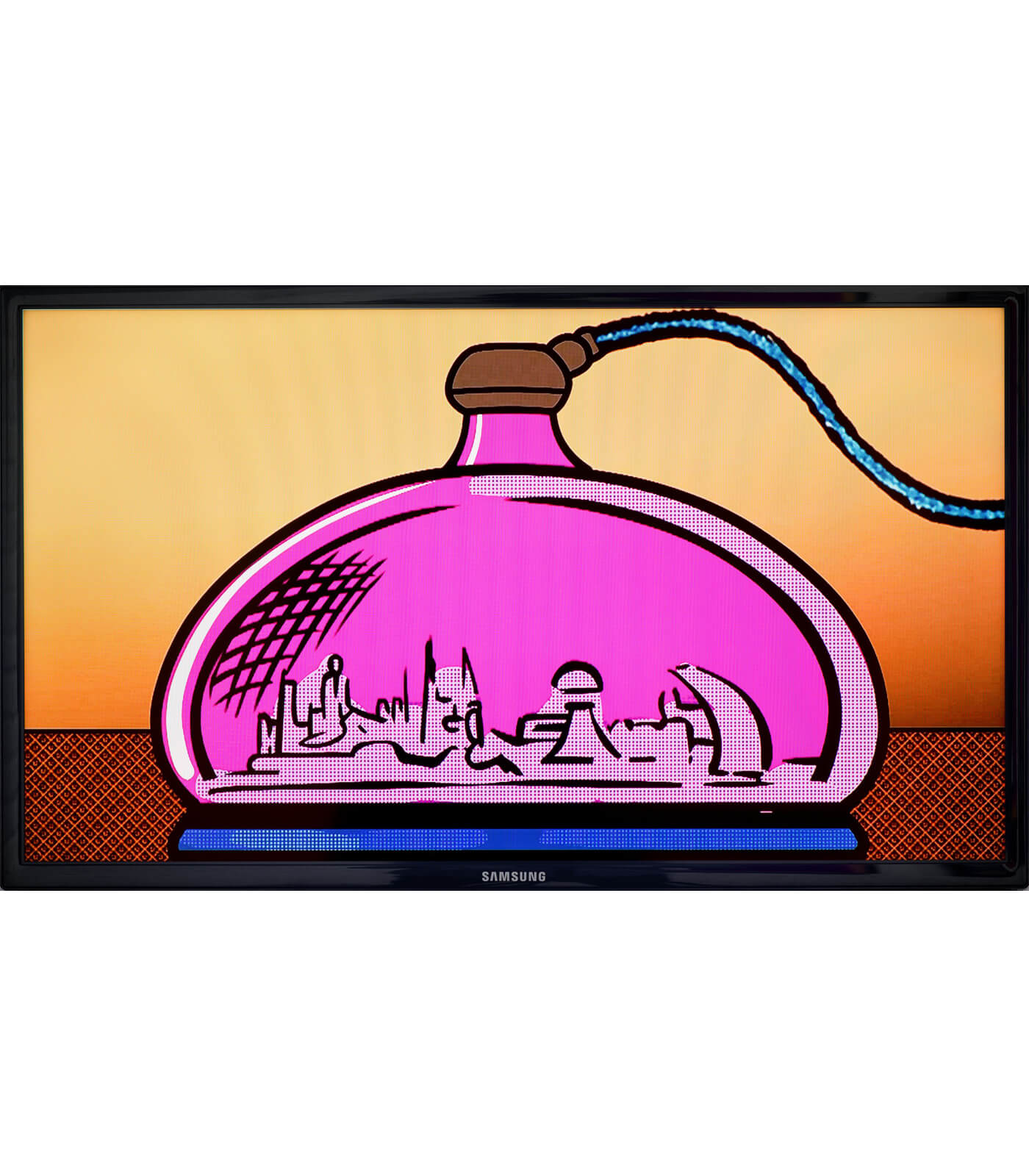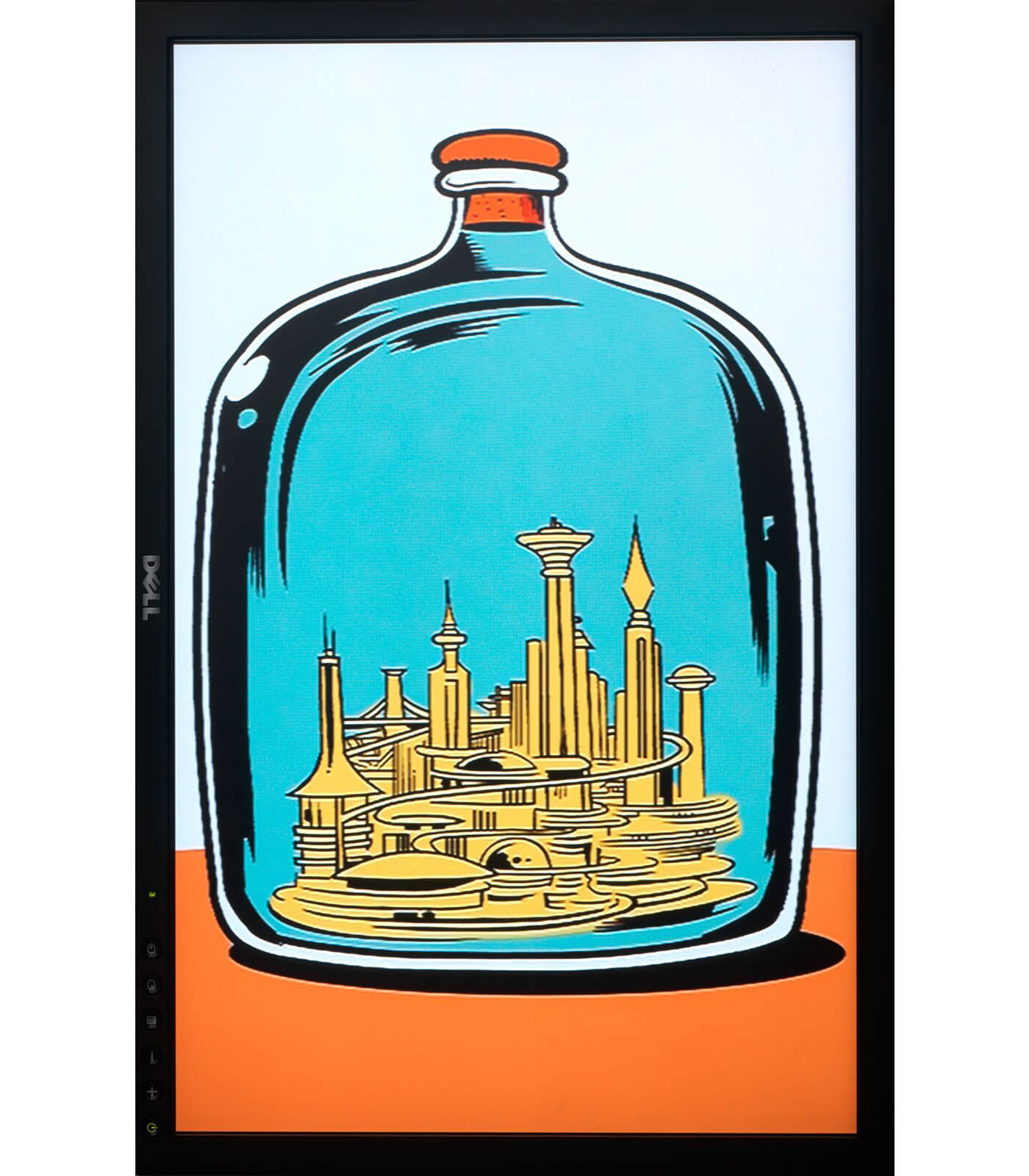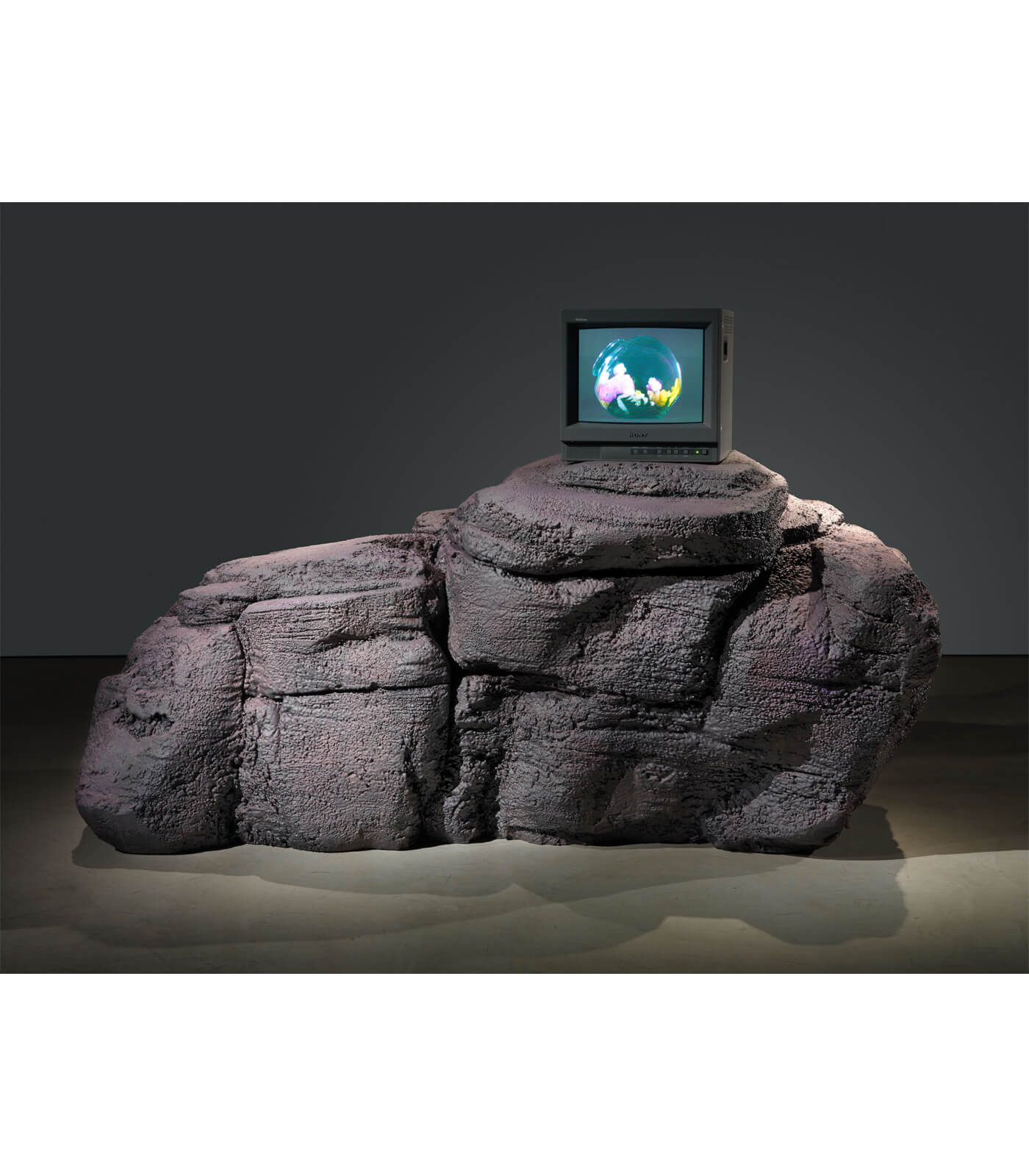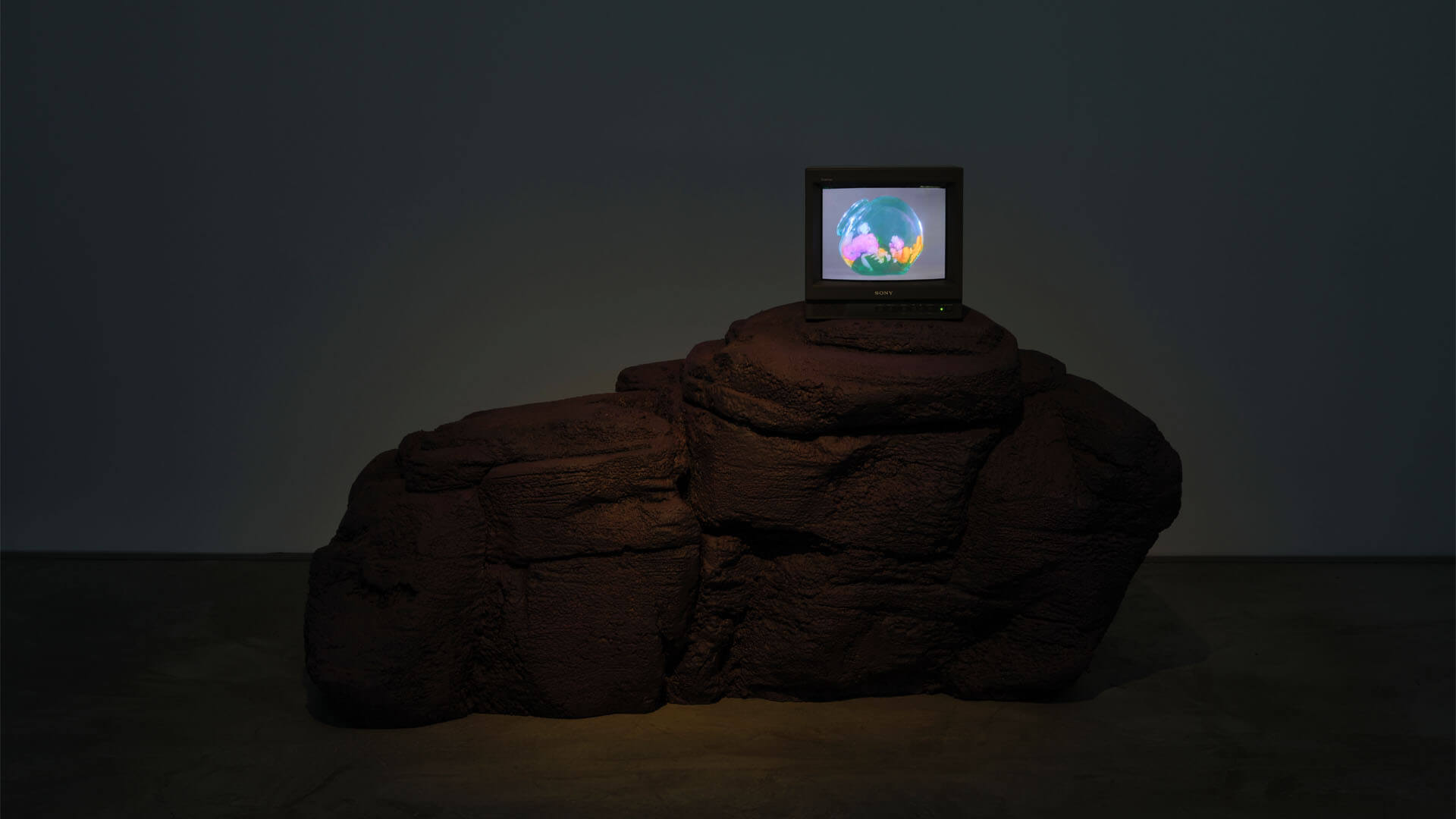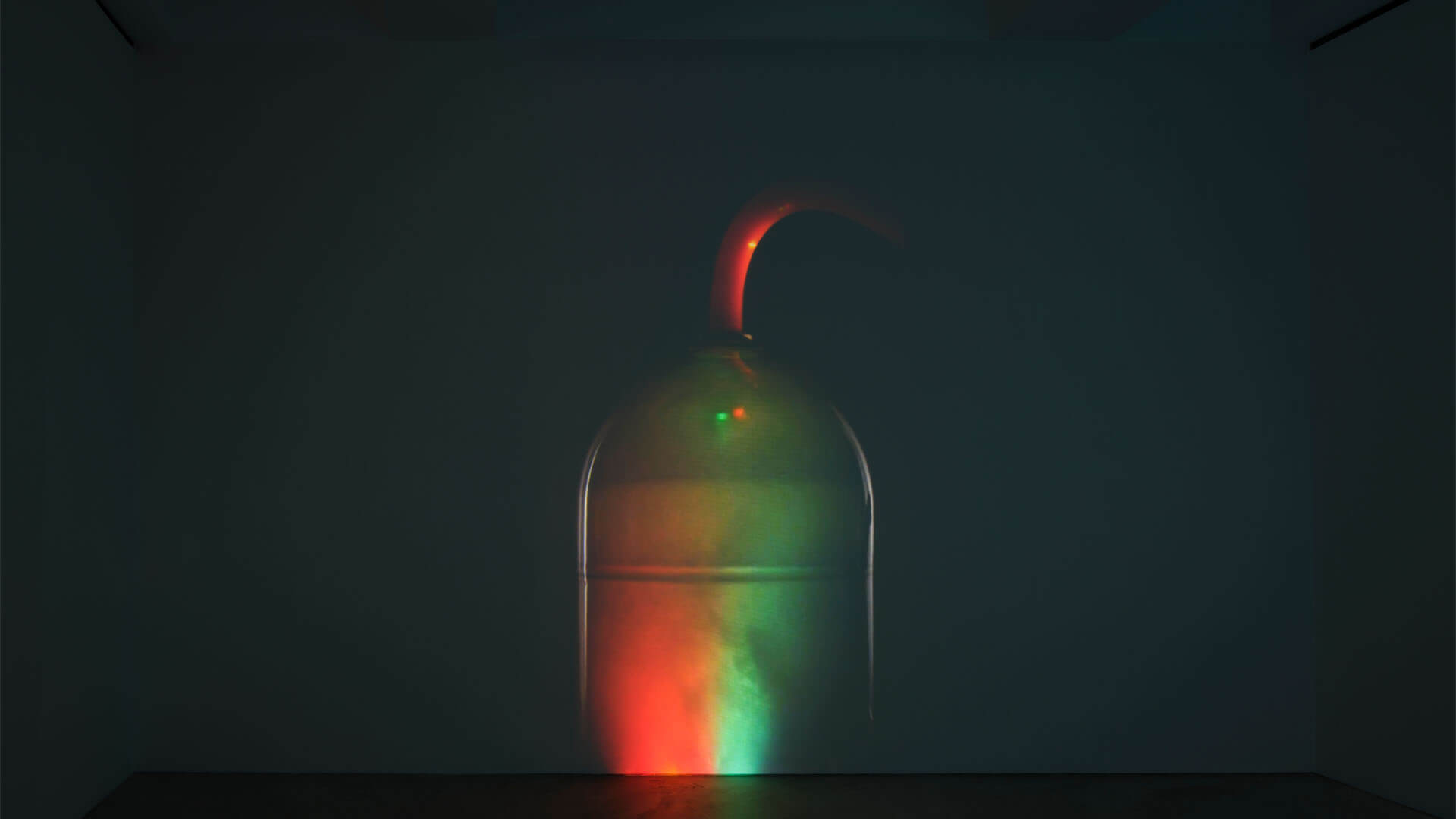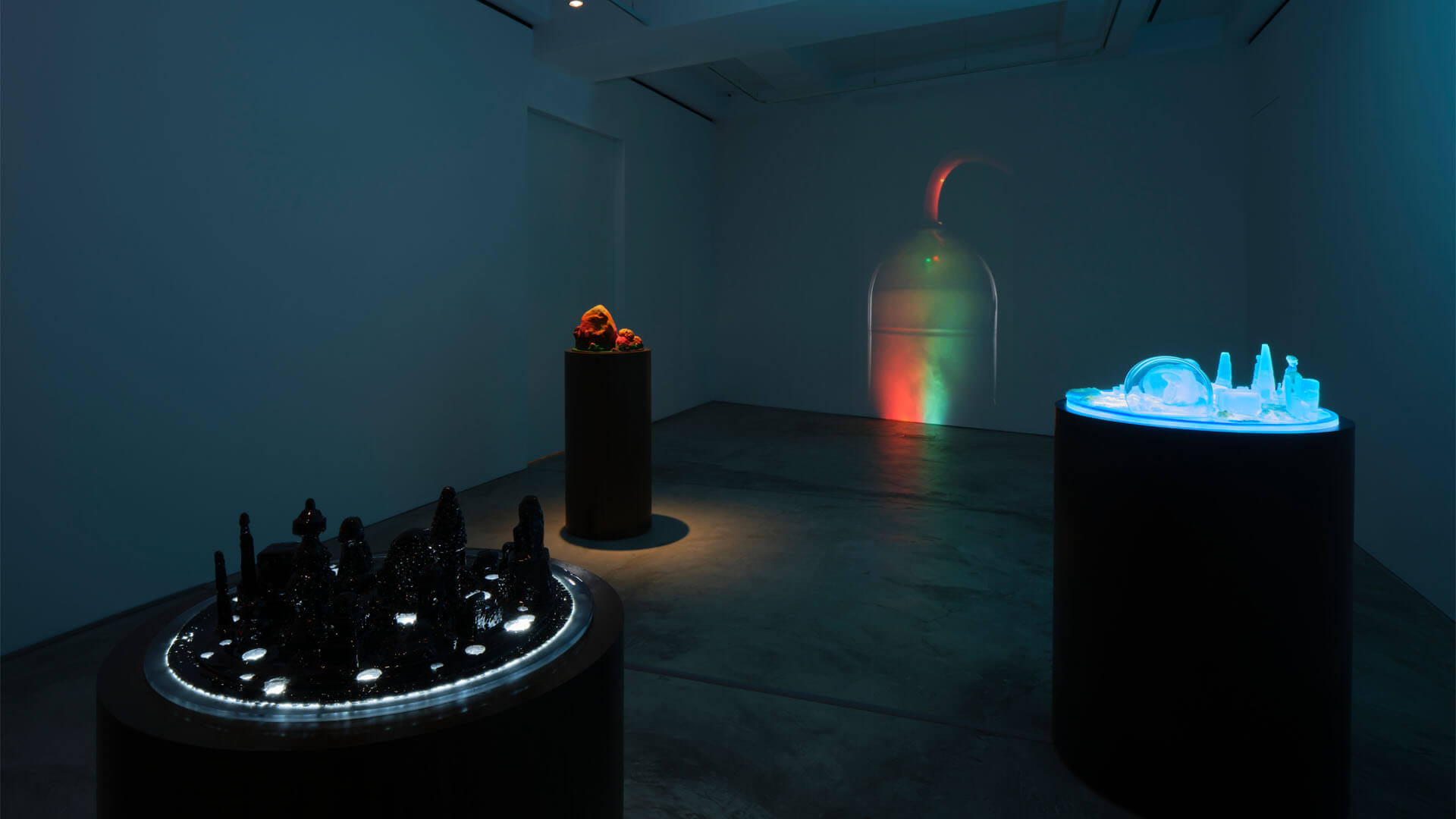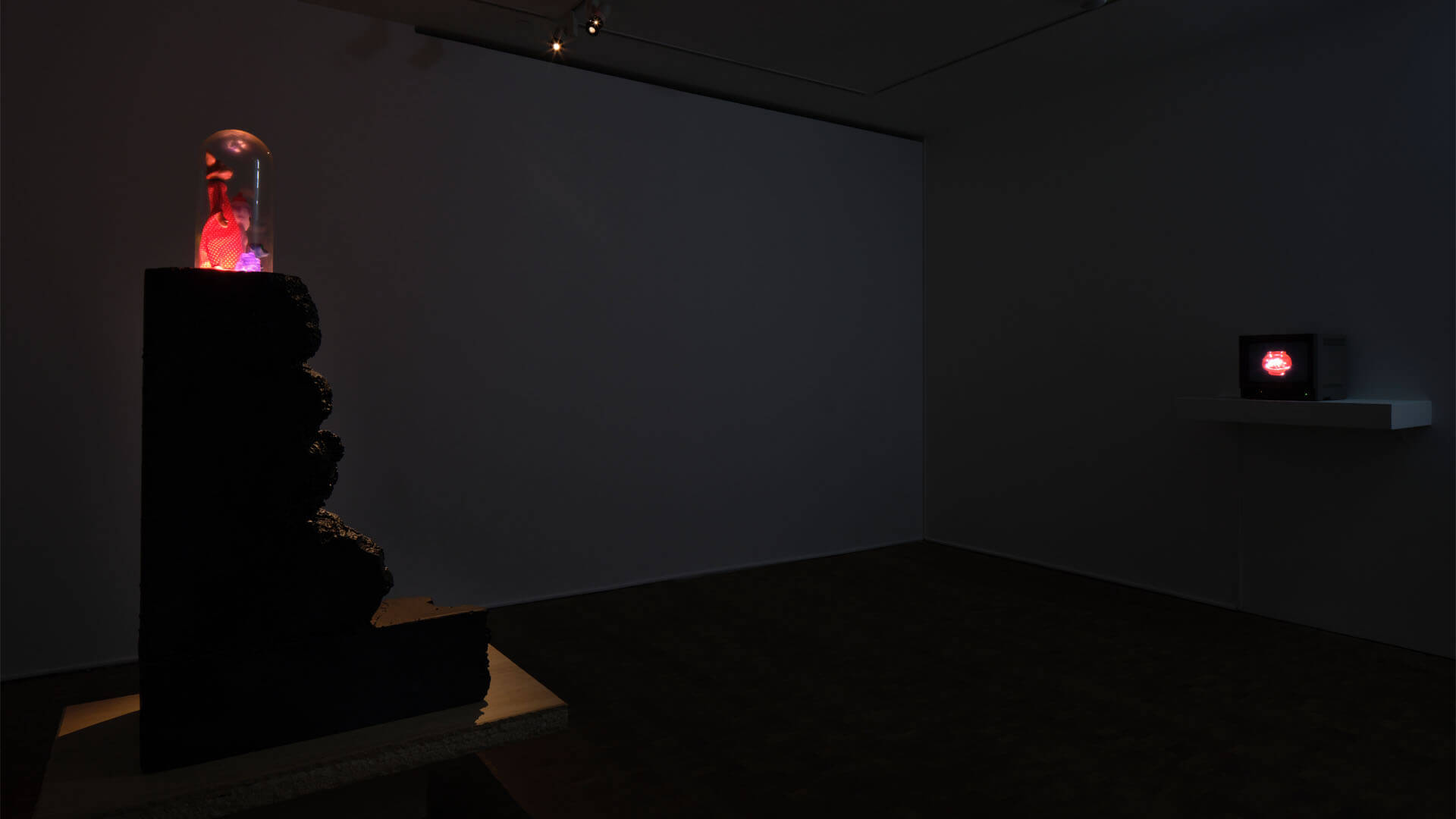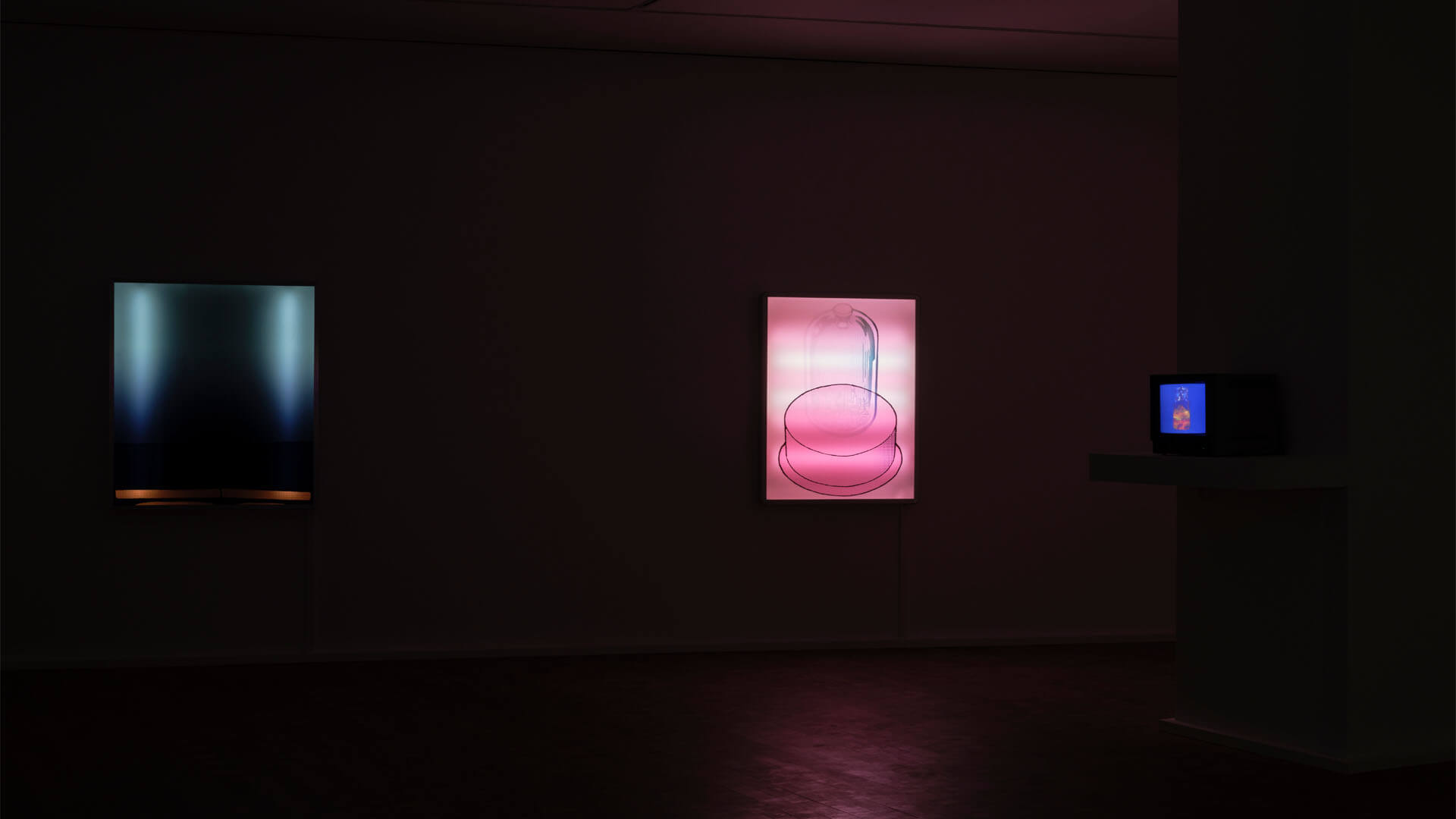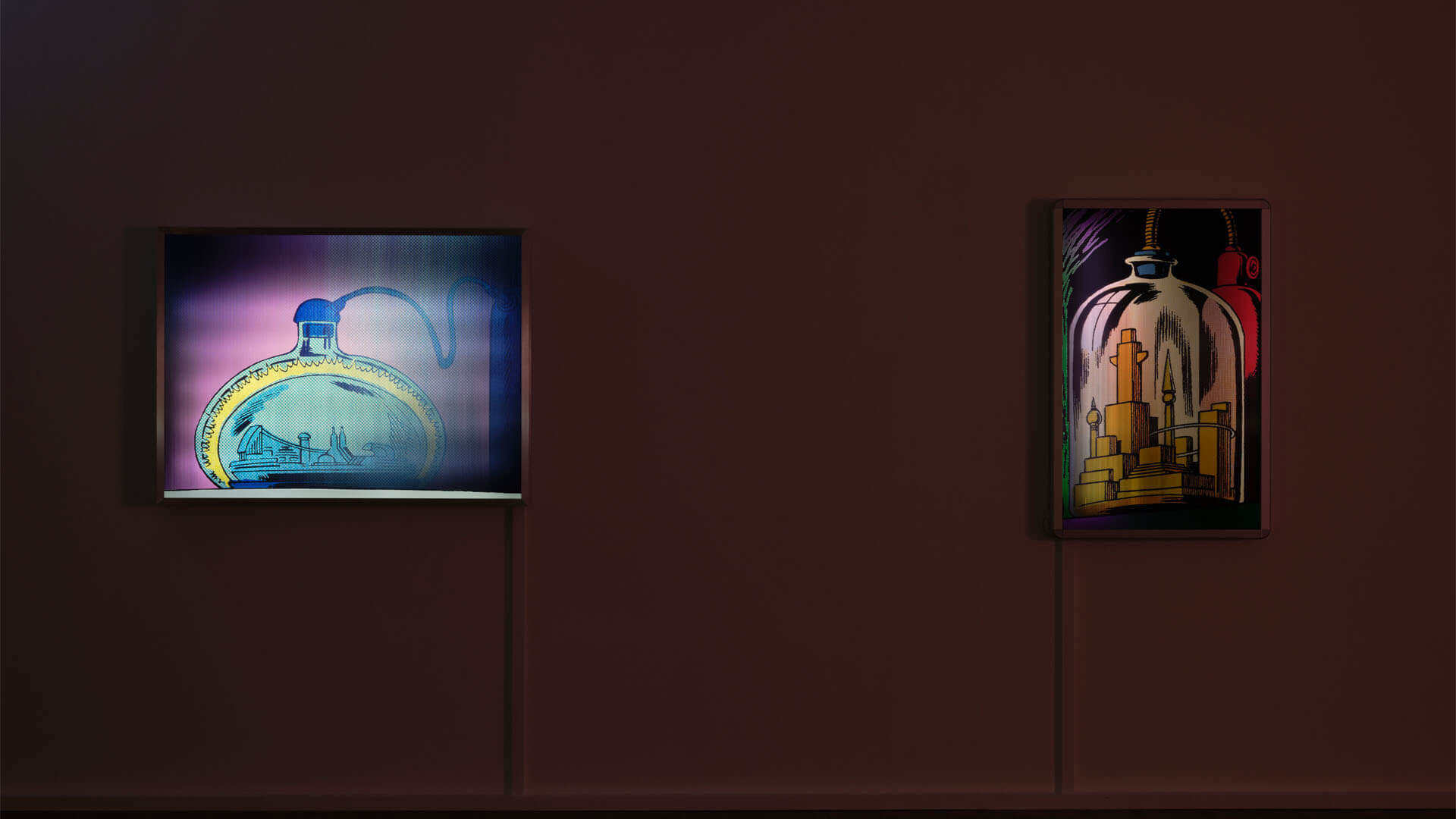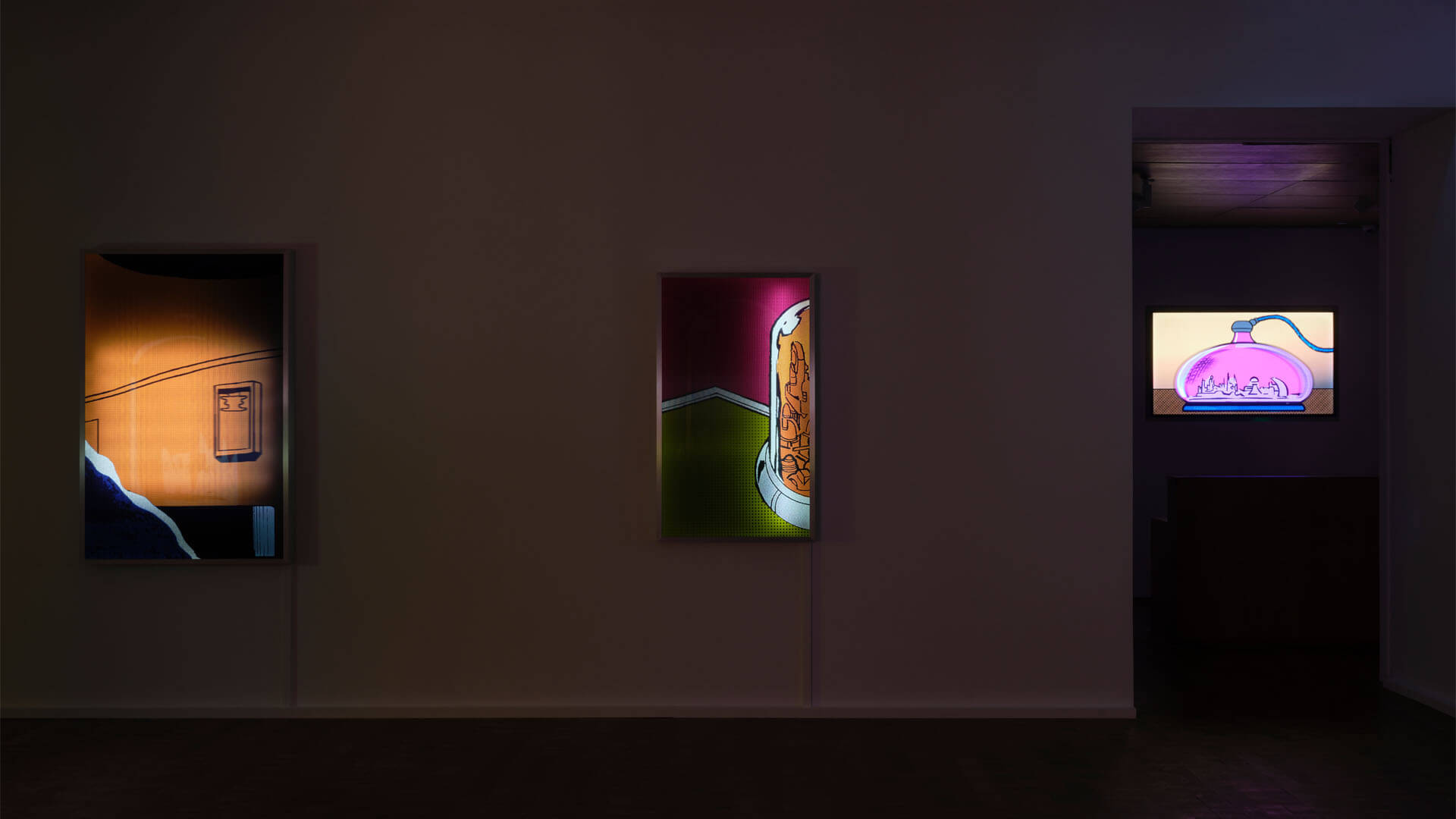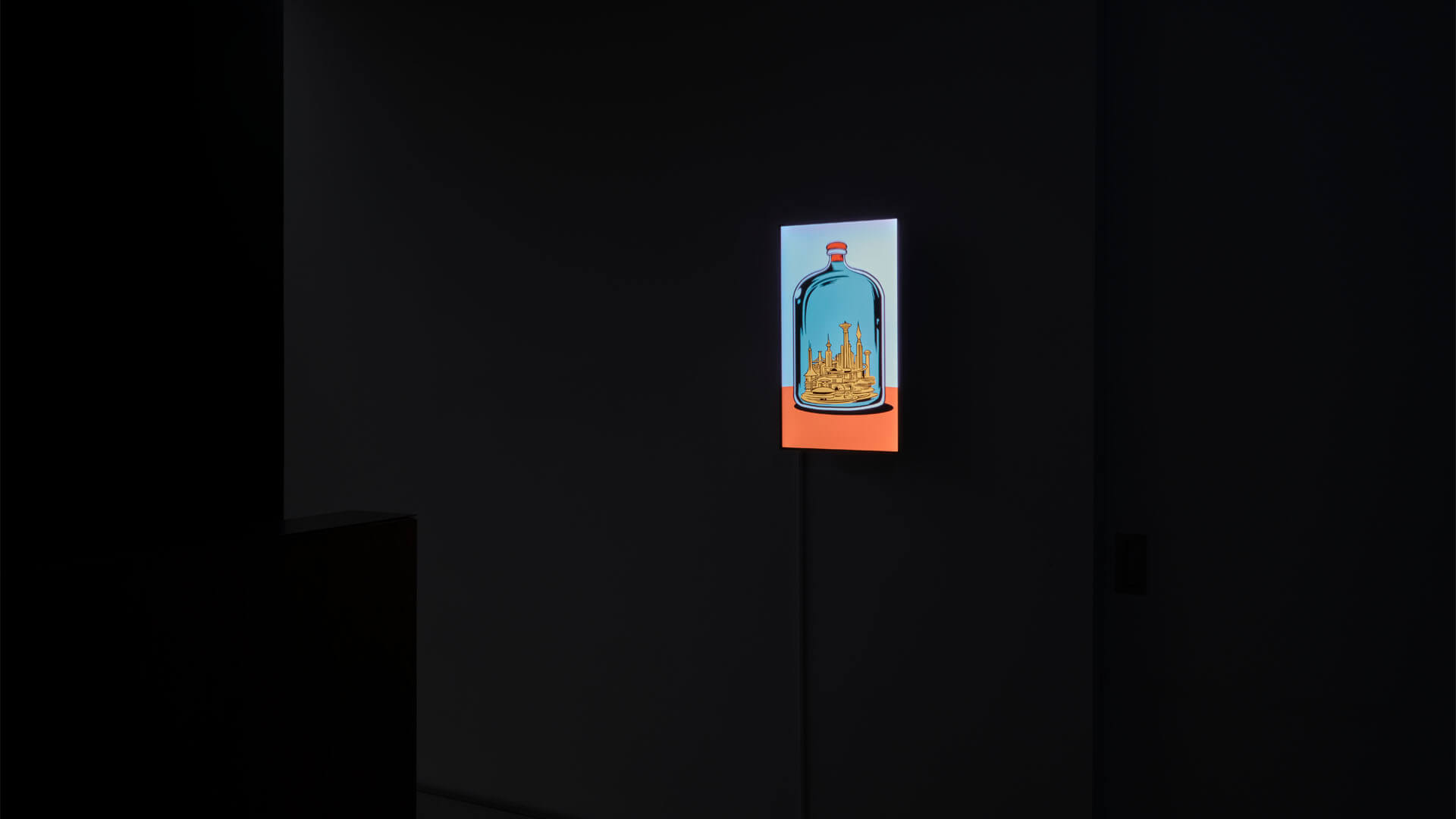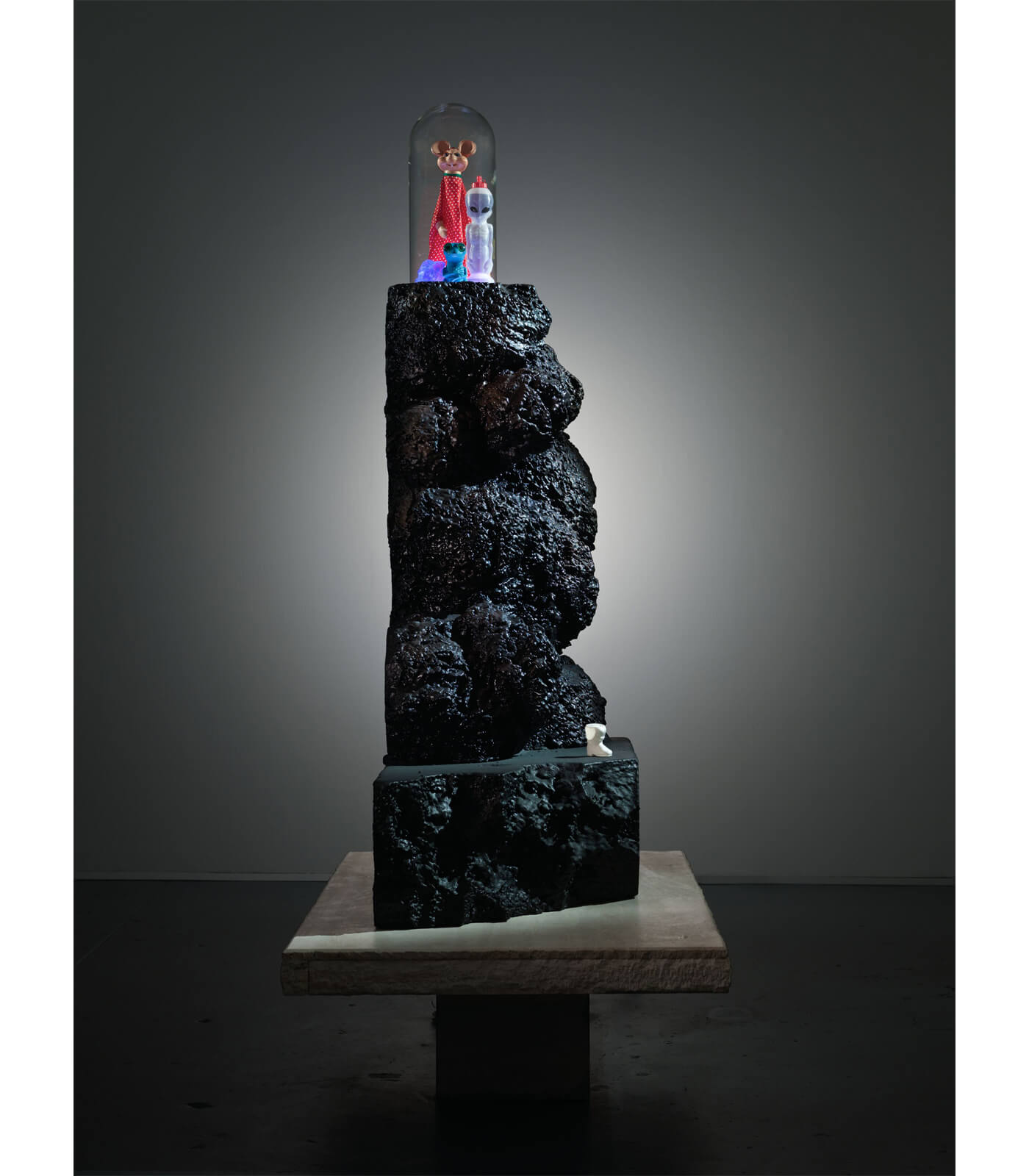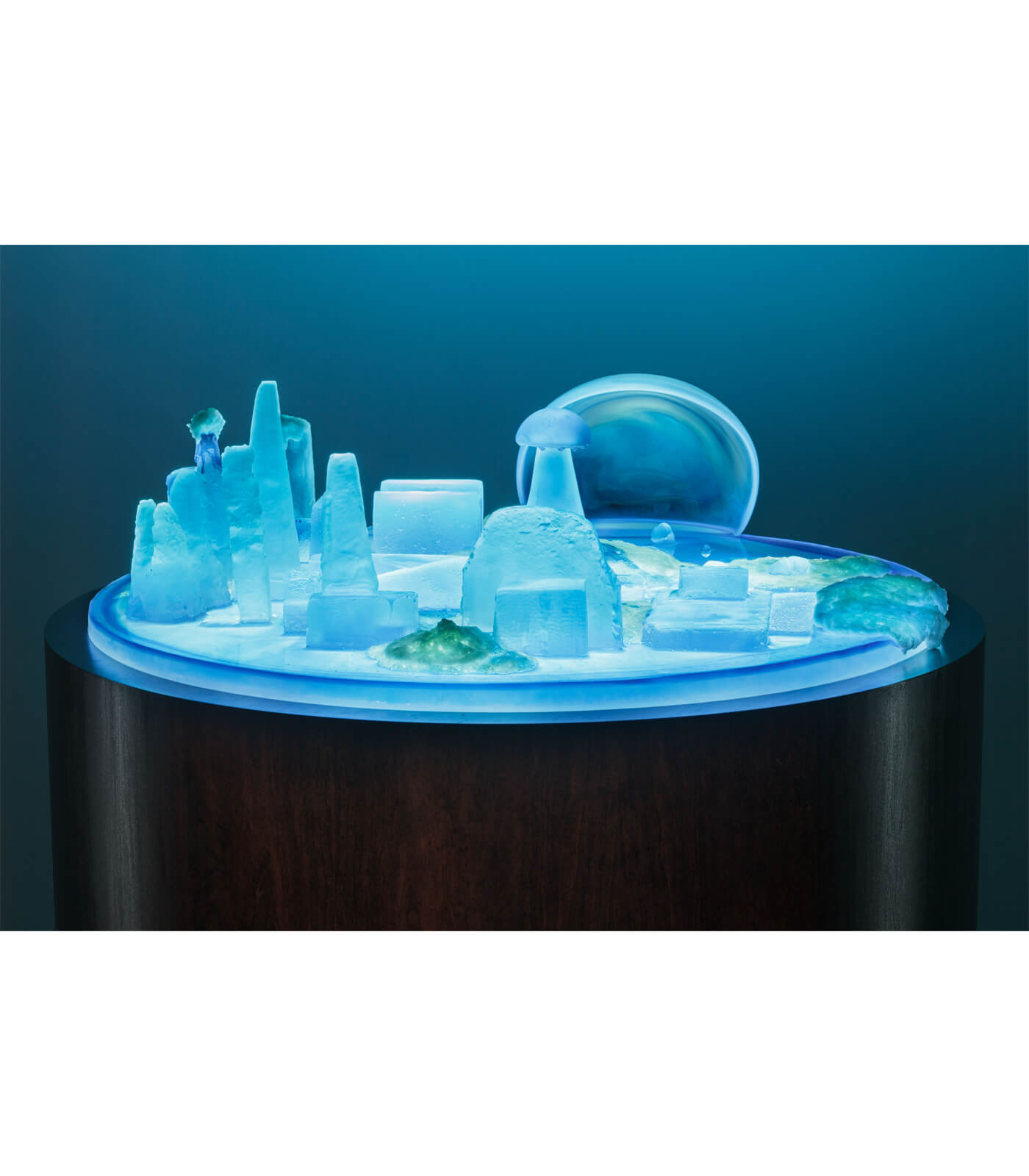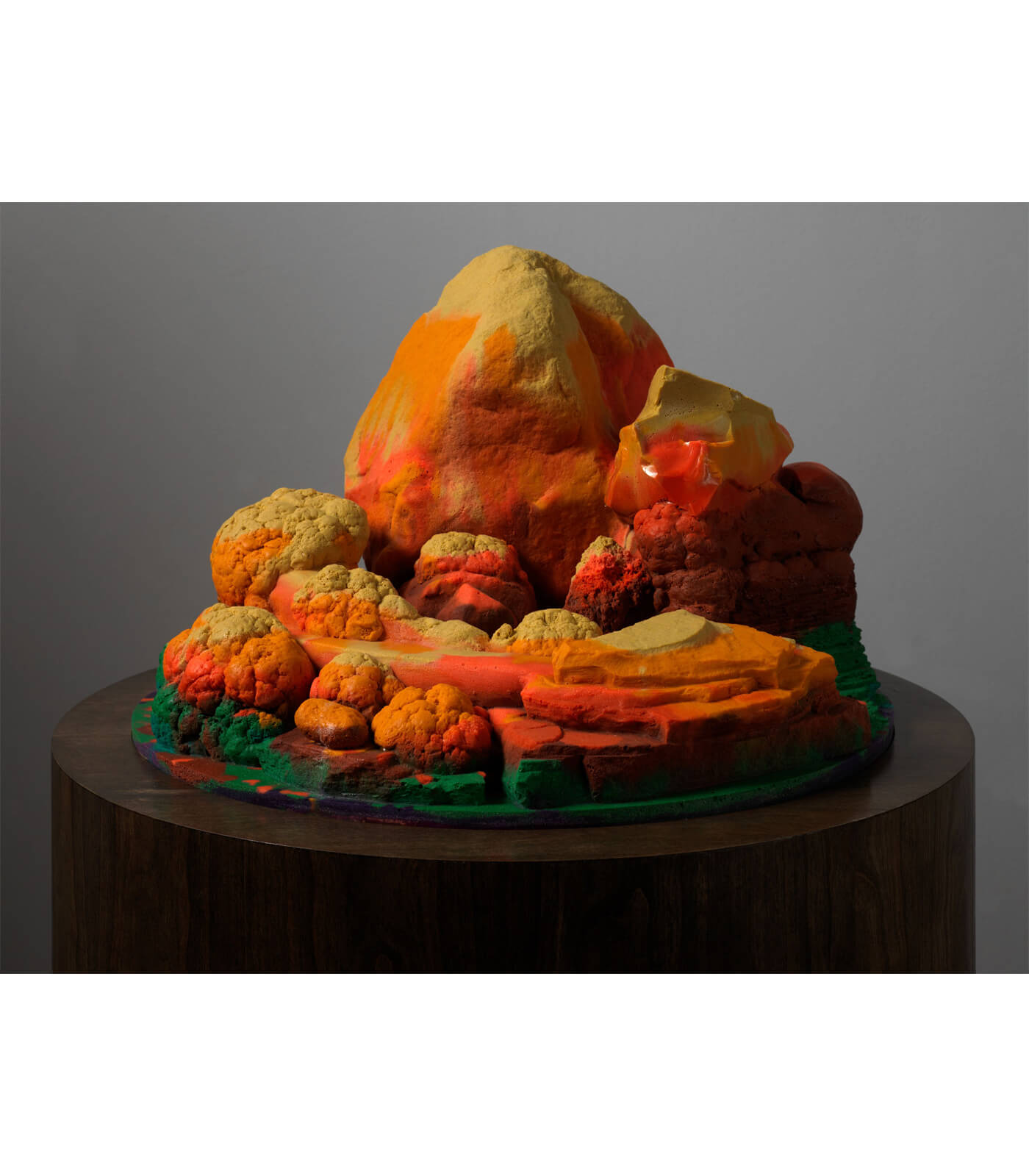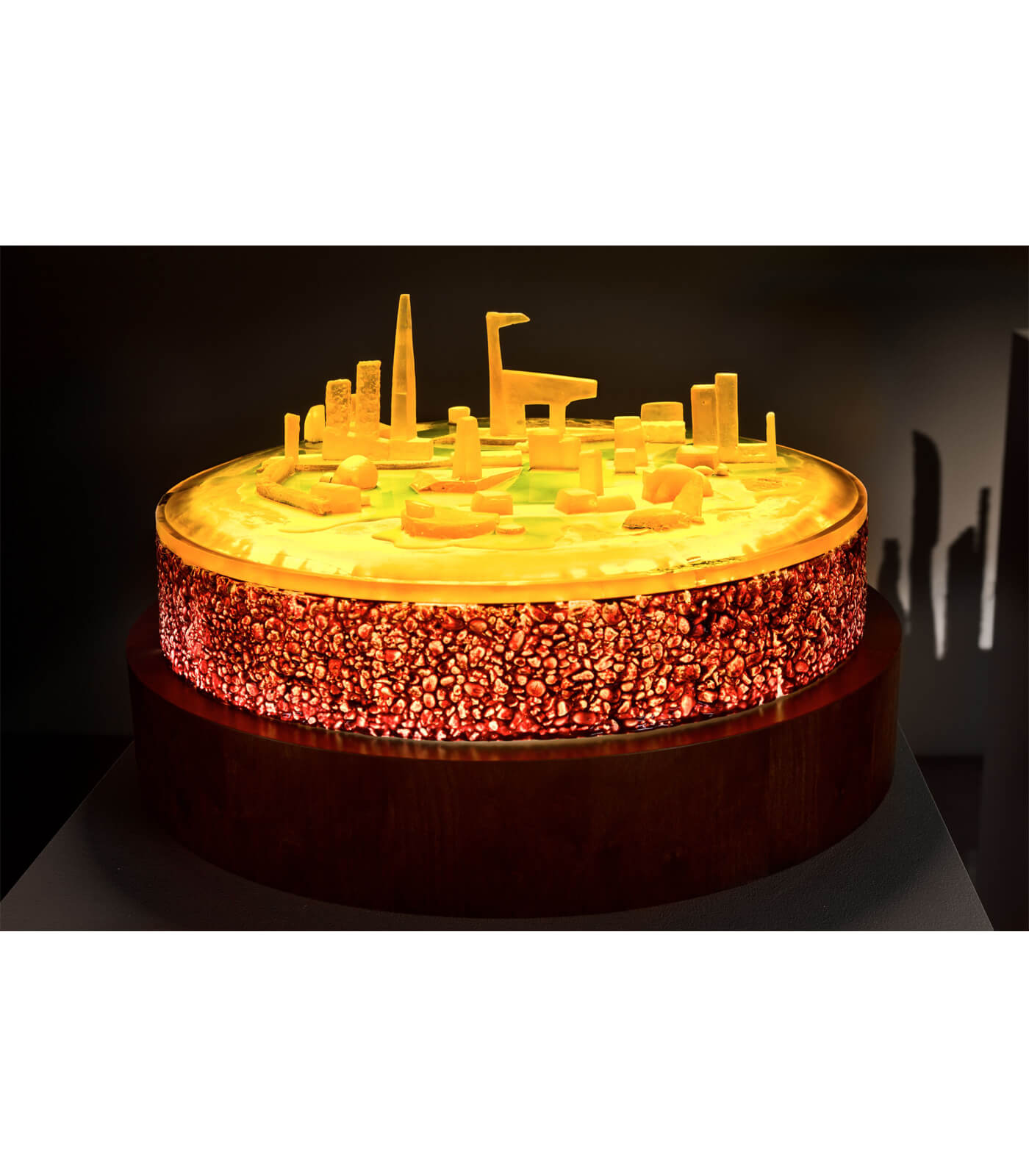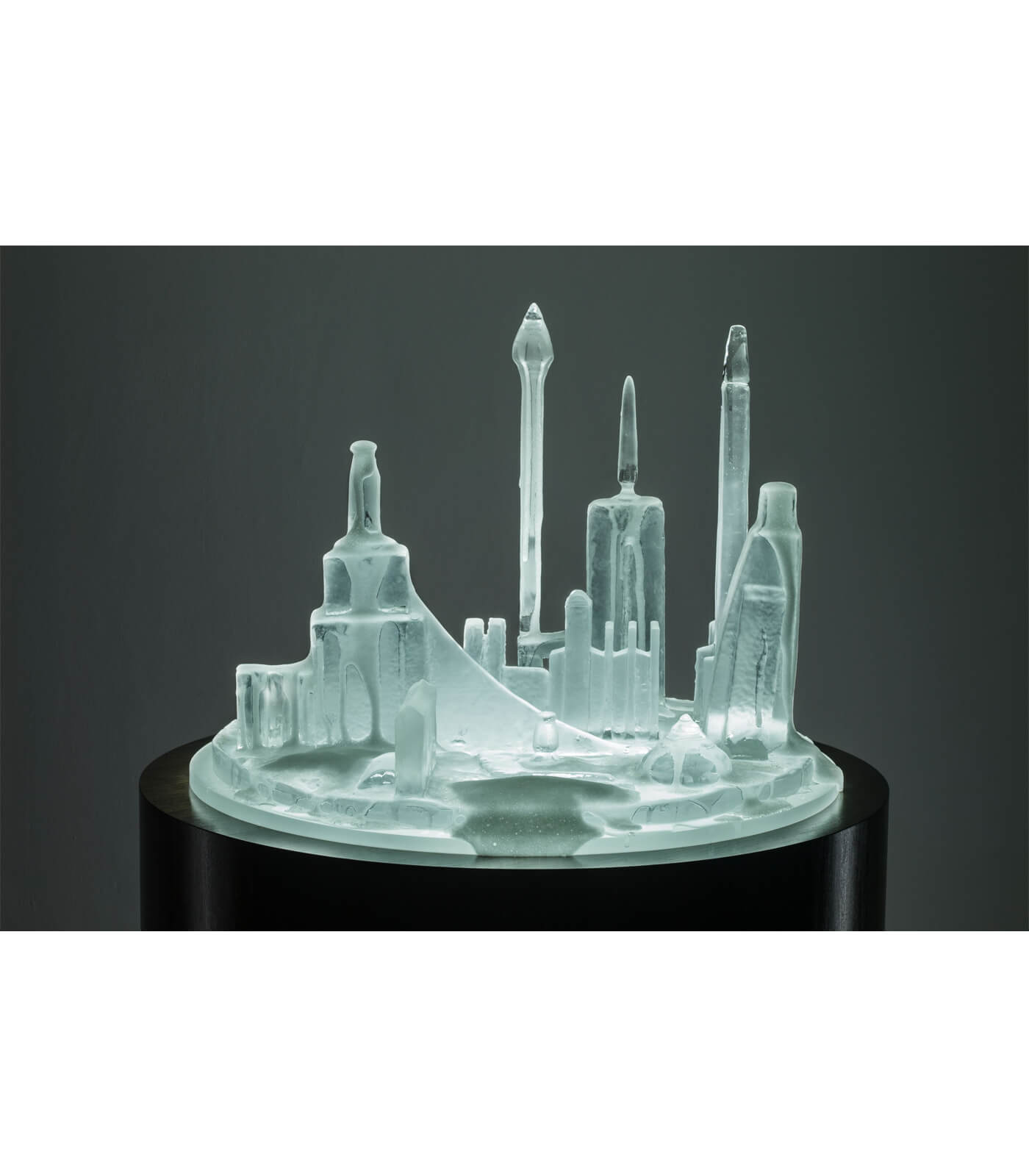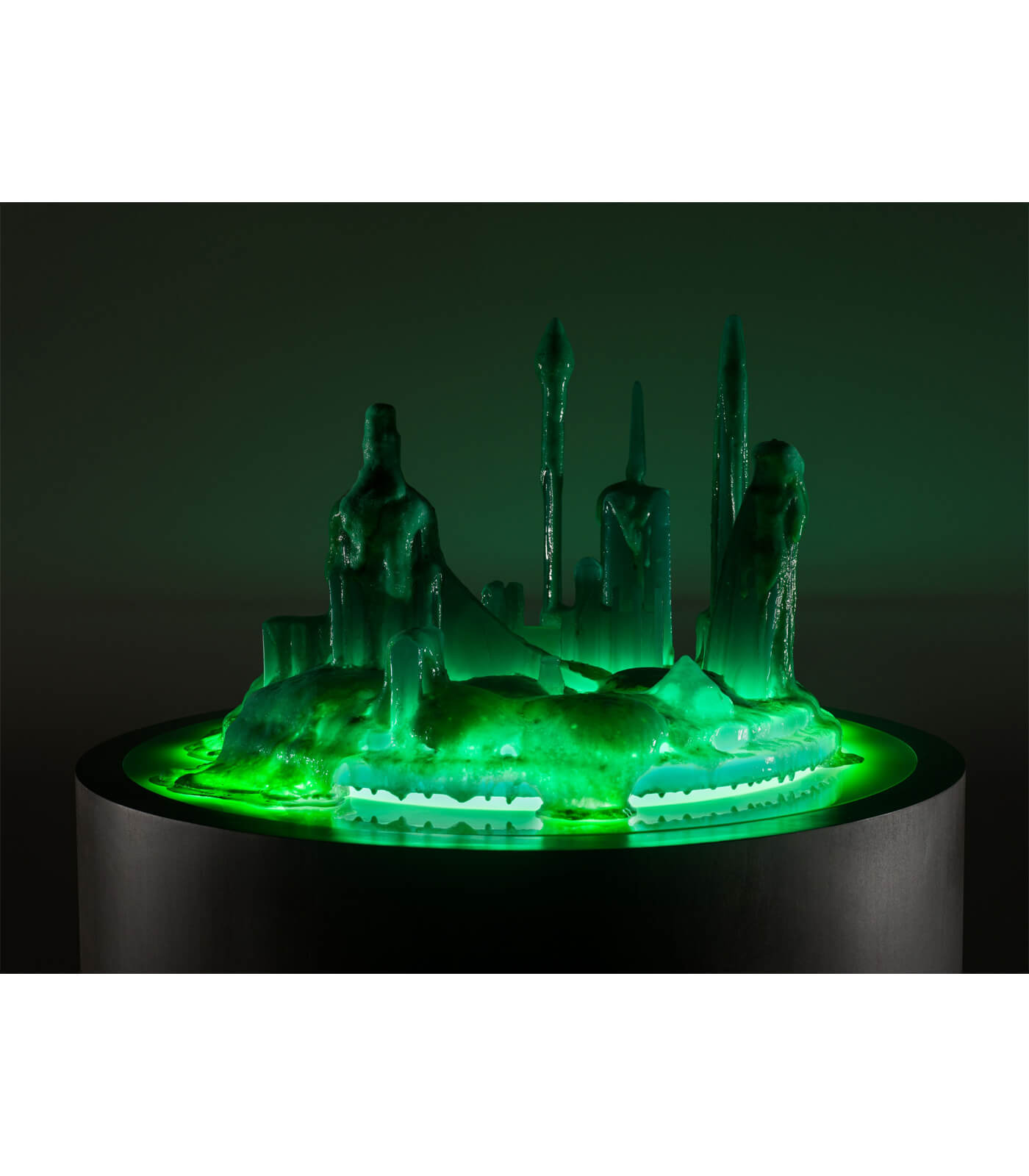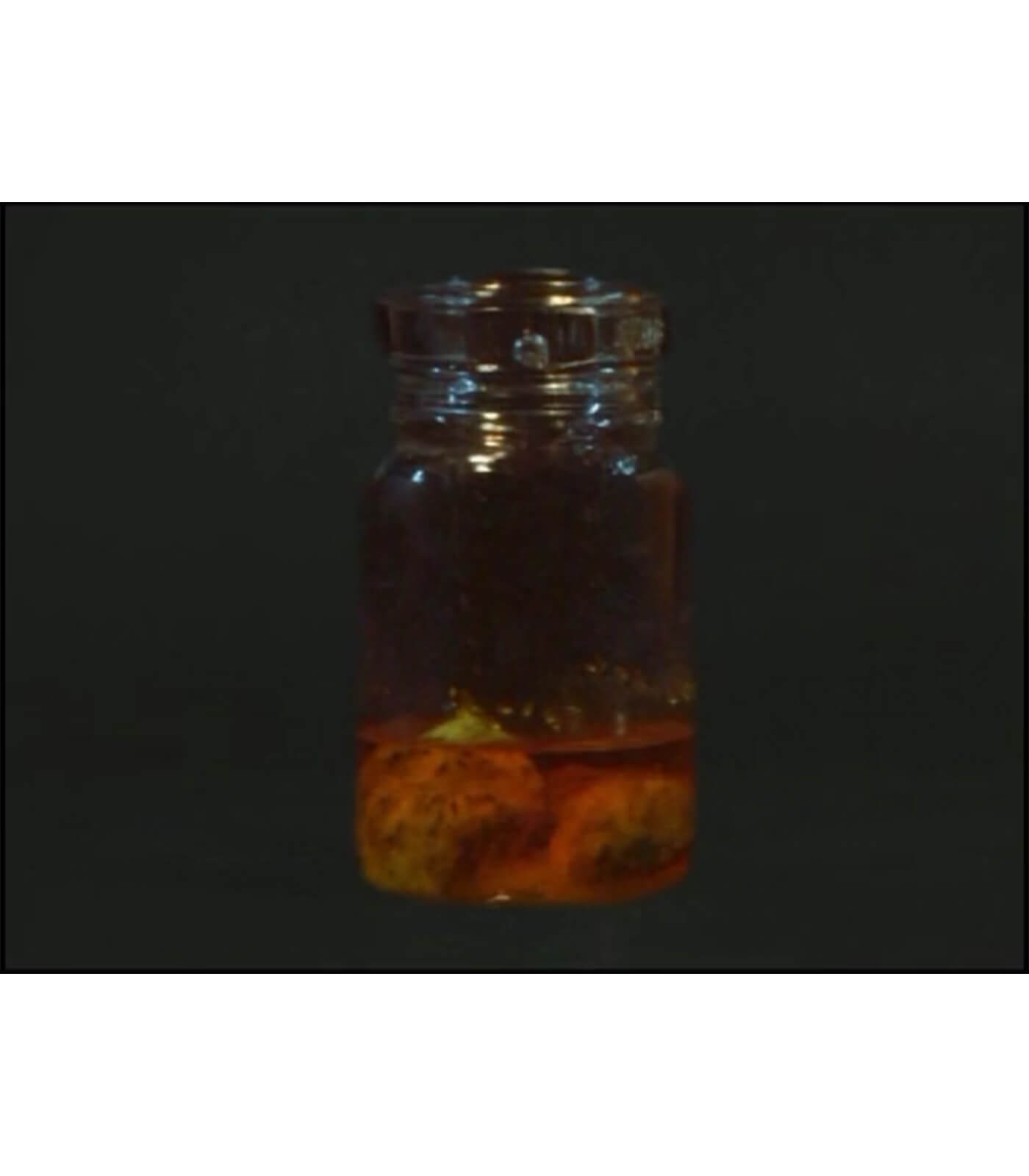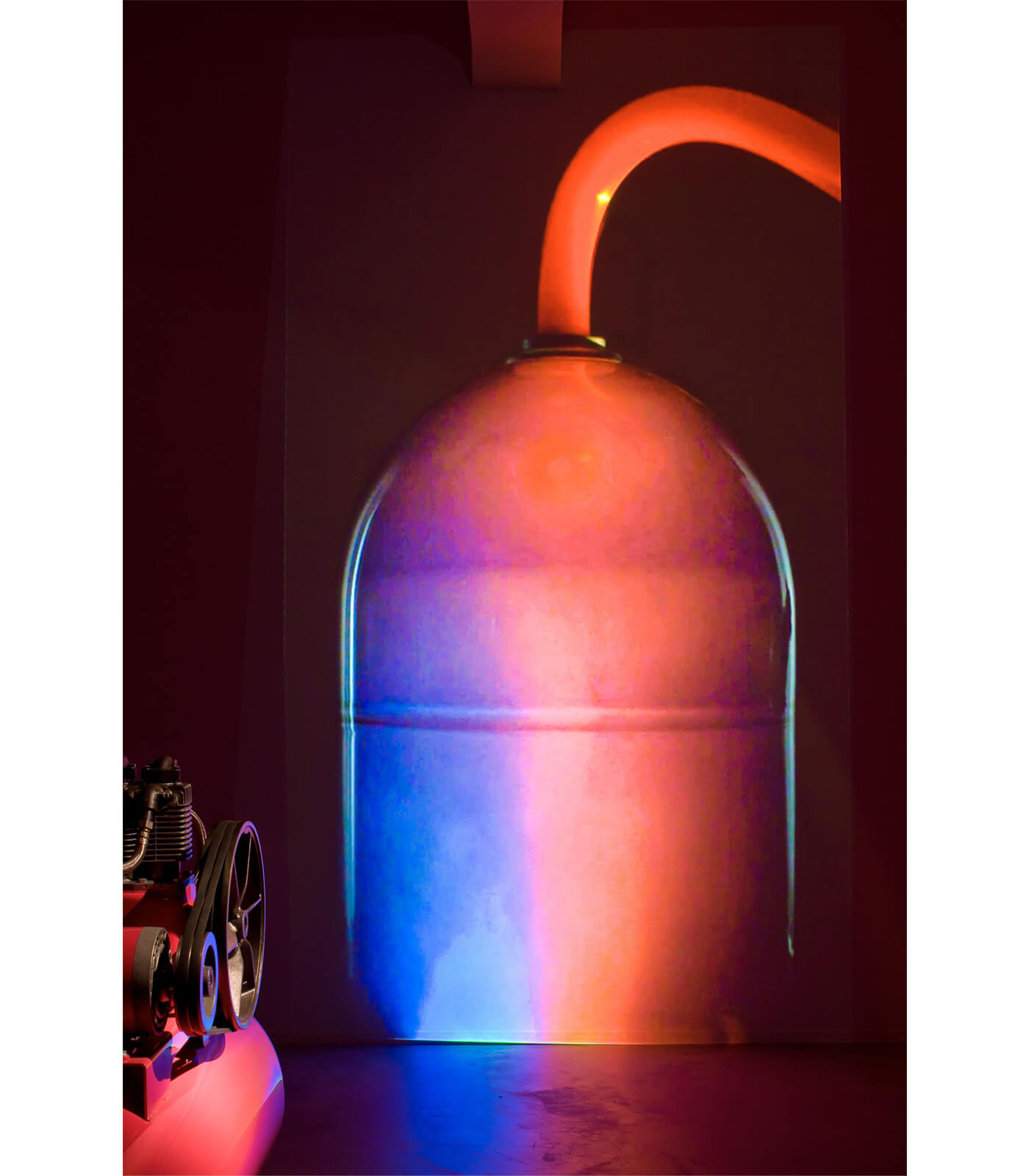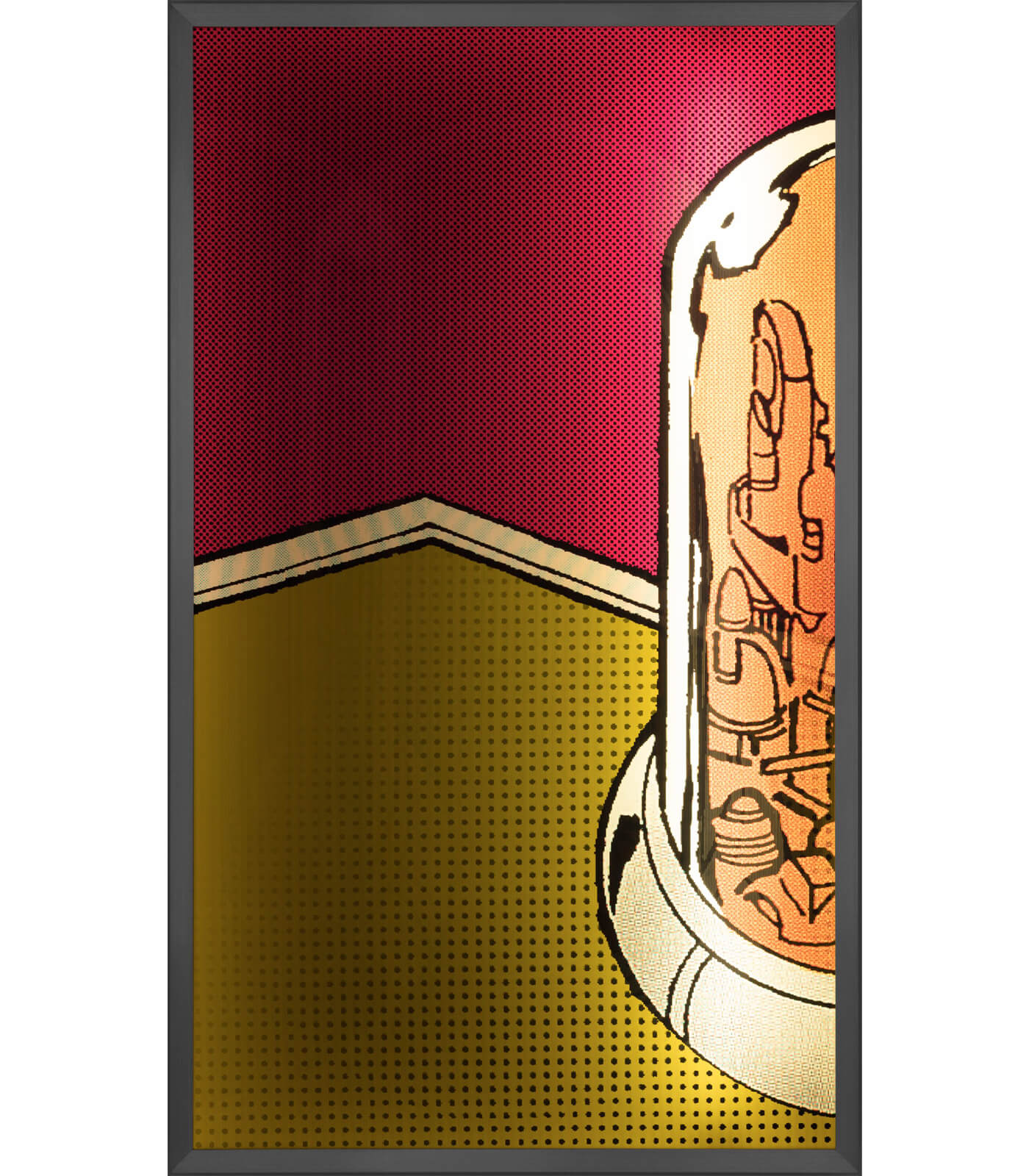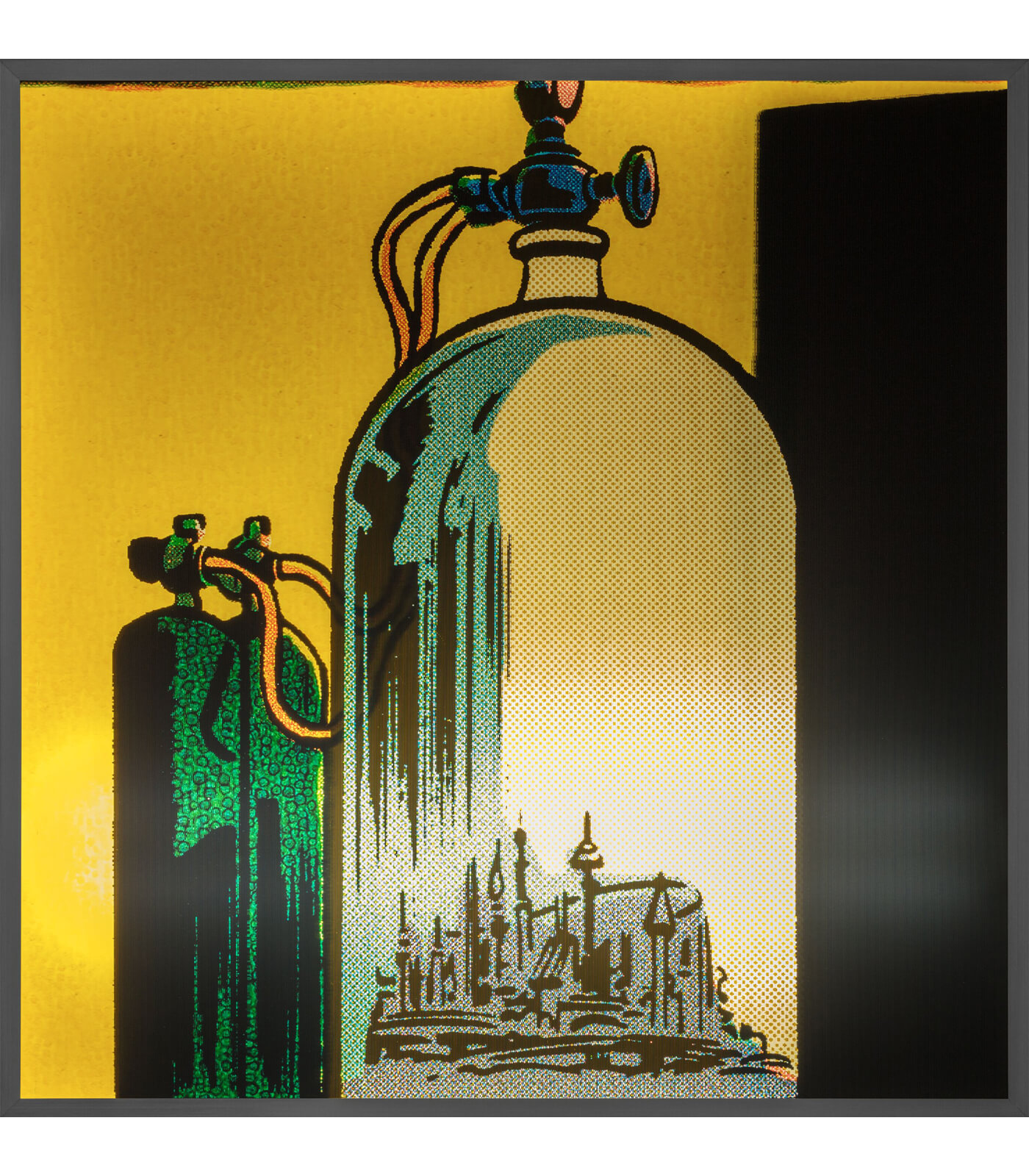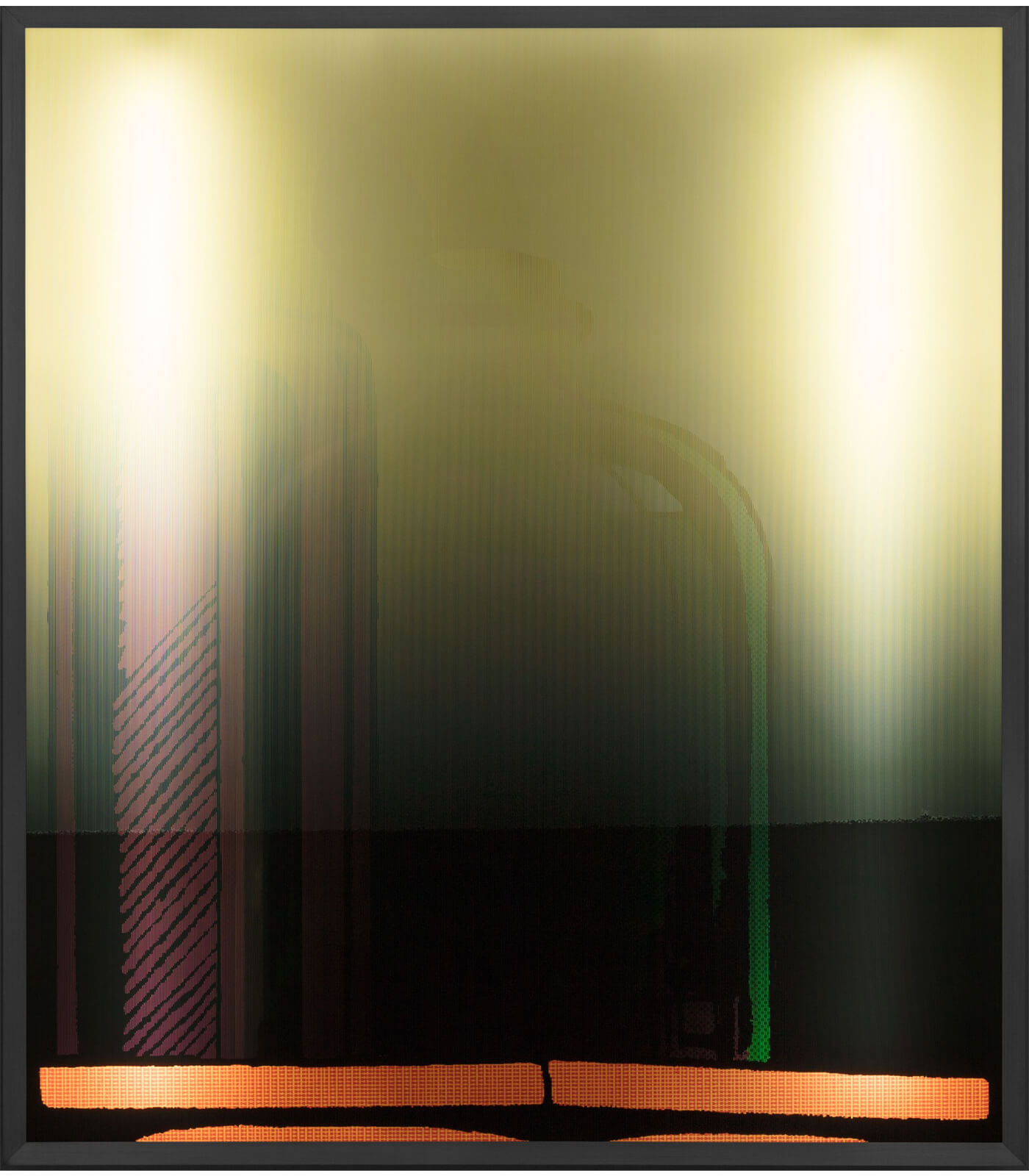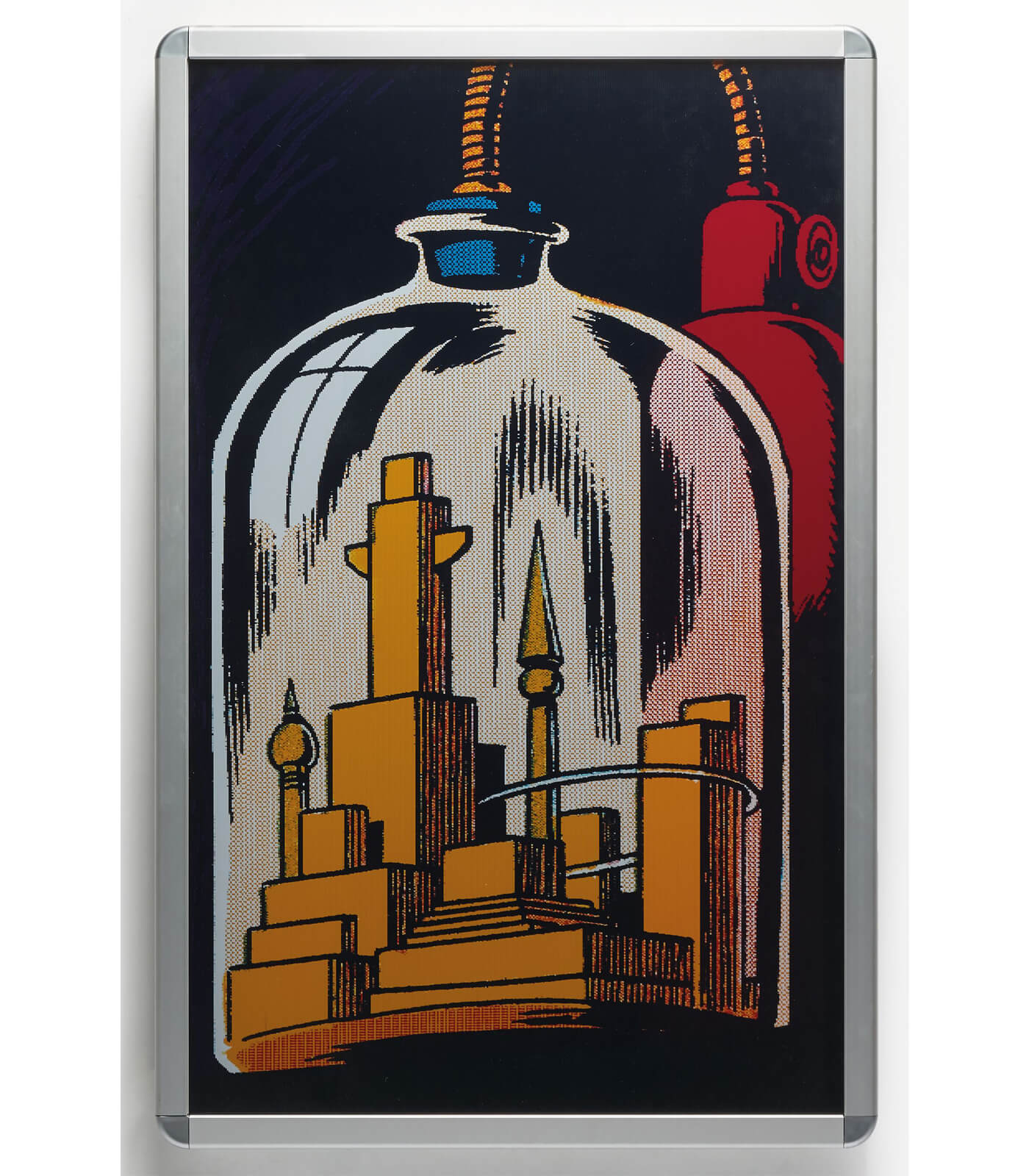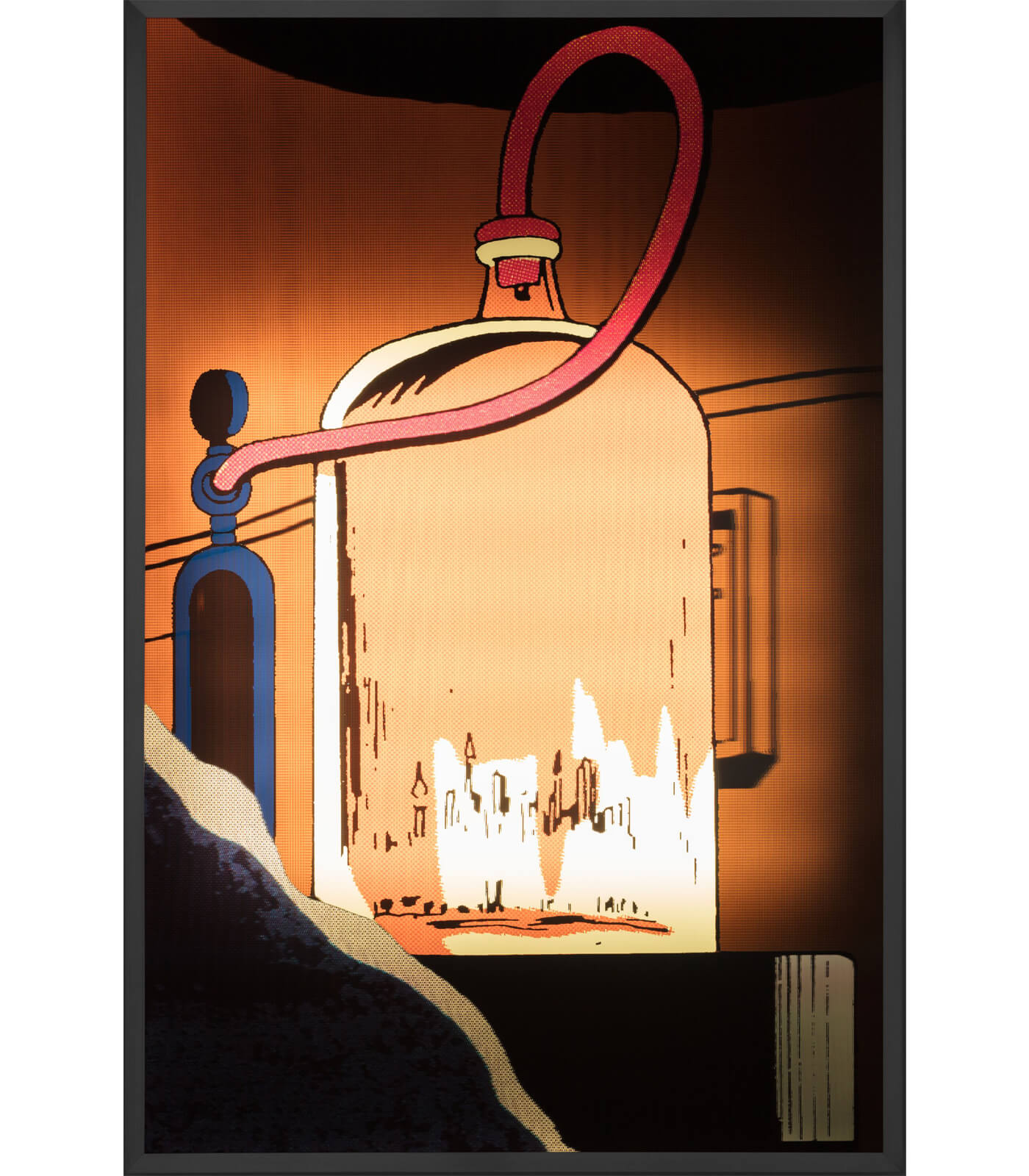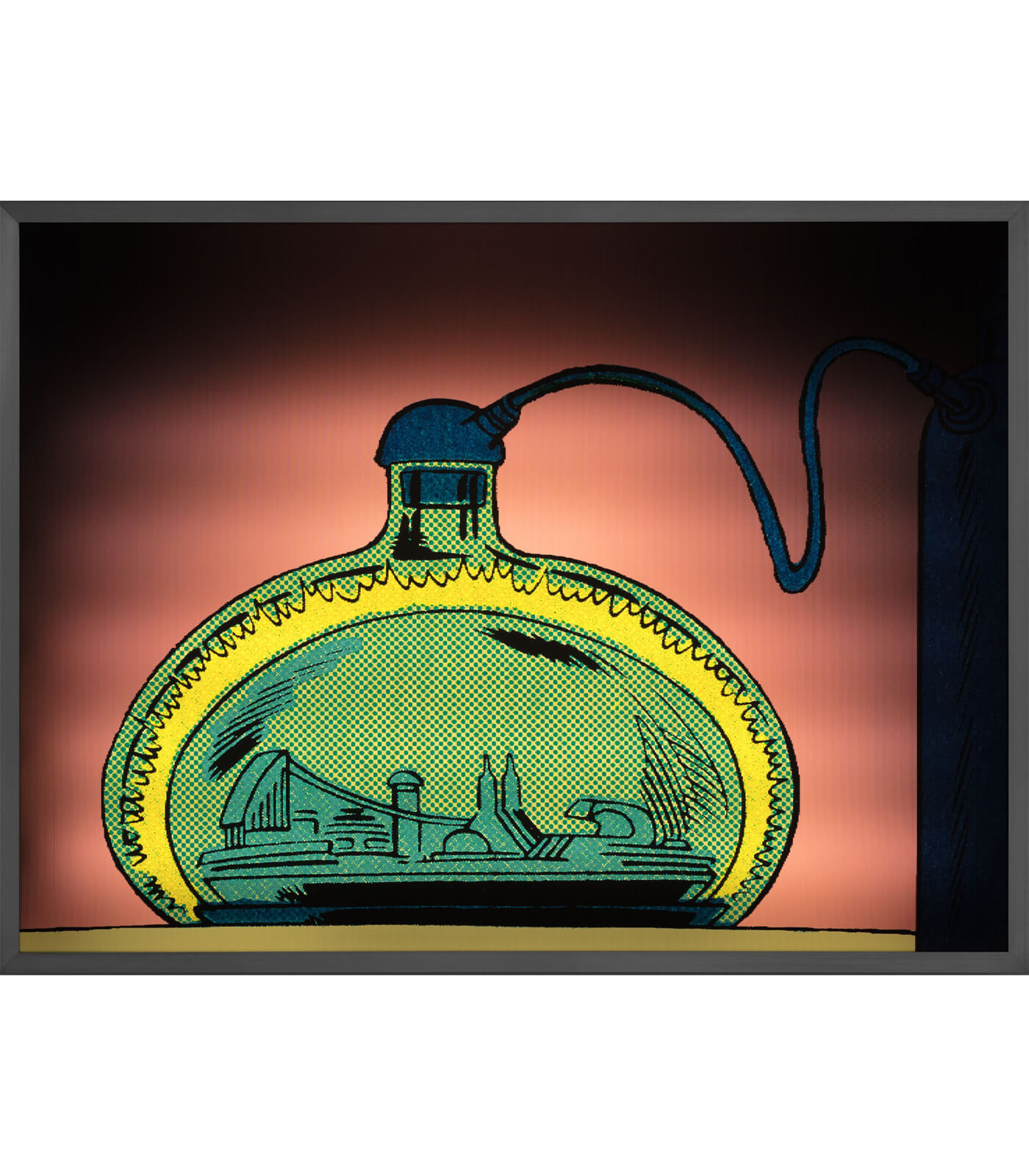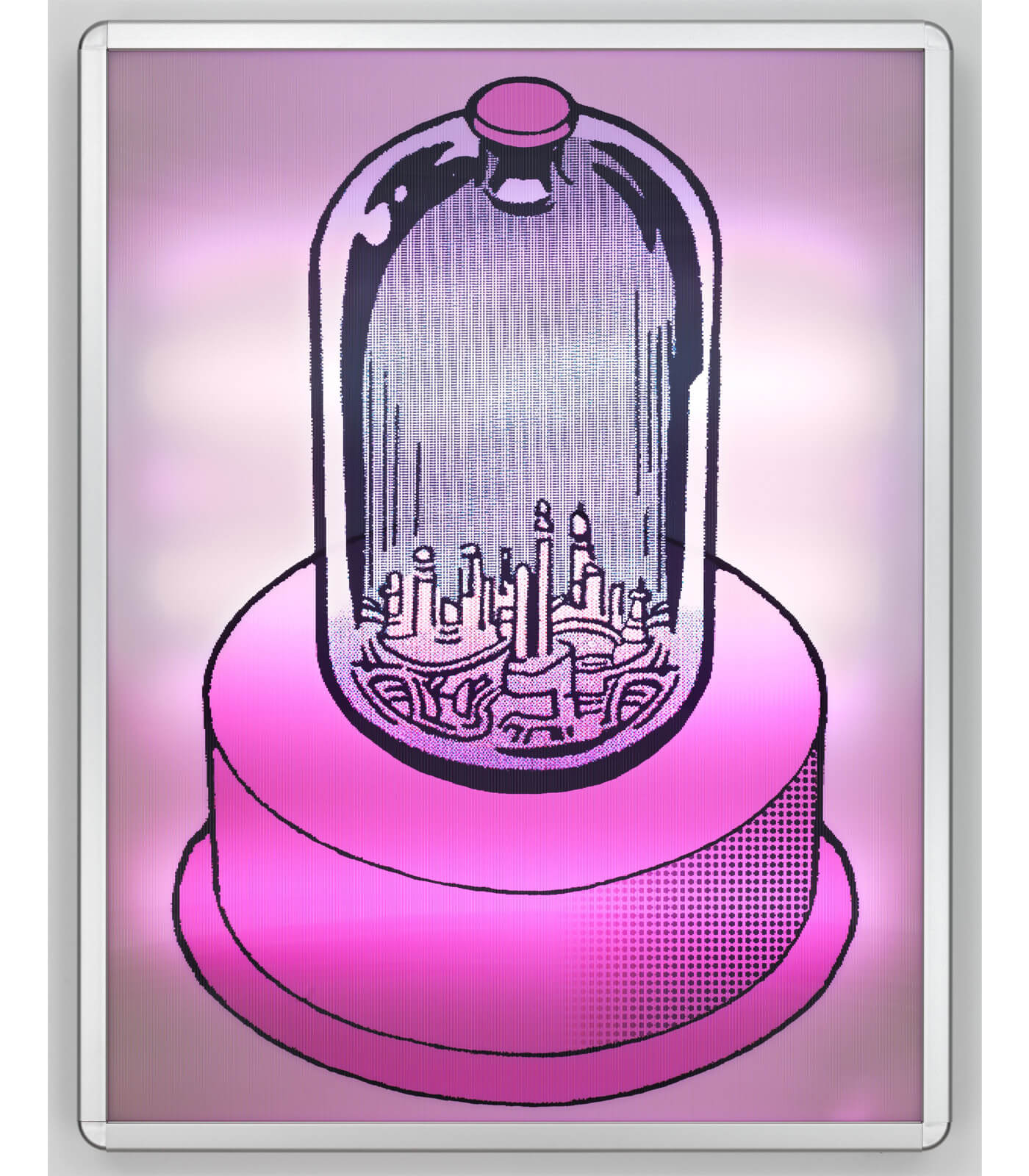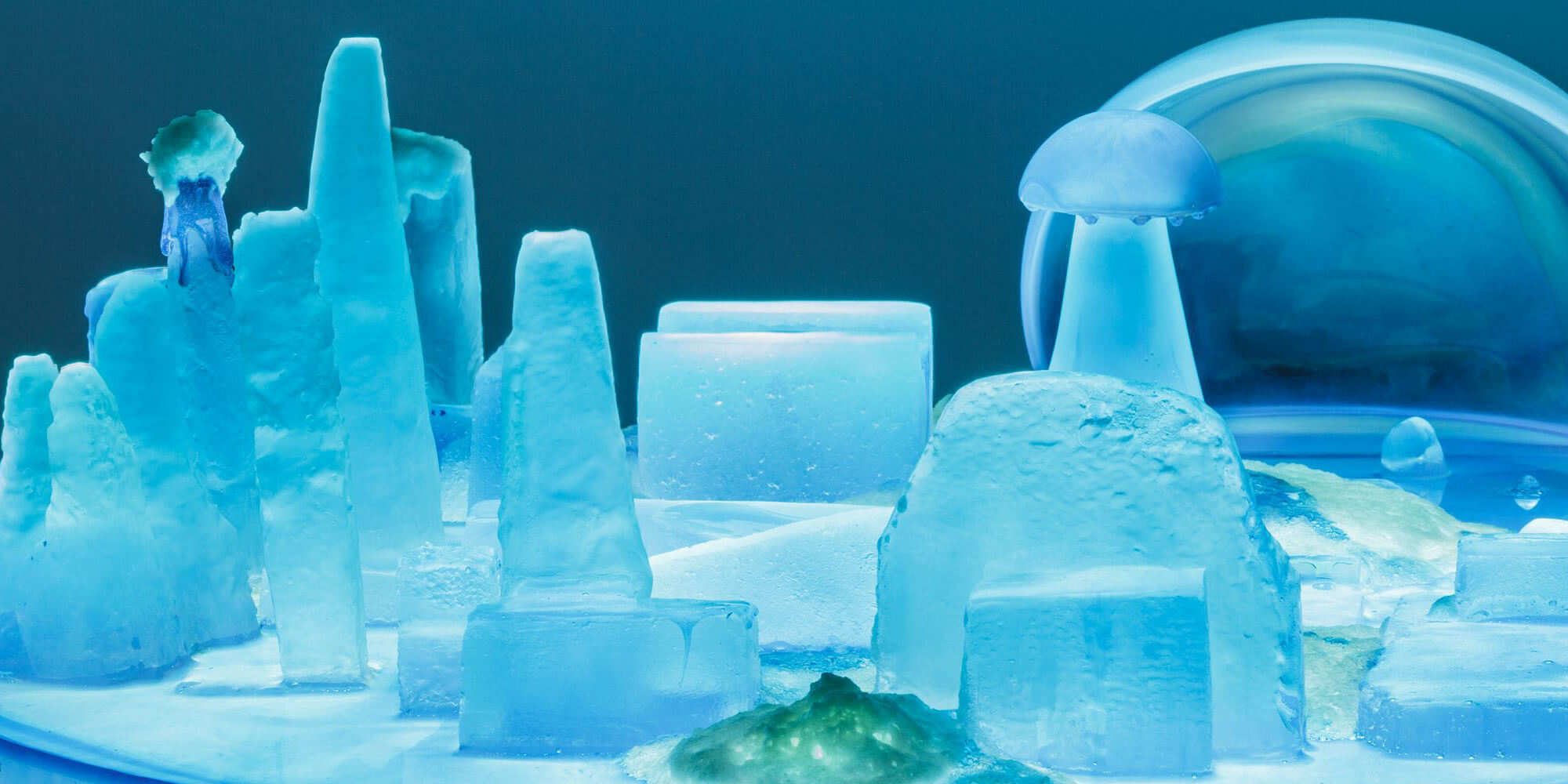
Mike Kelley
Subharmonic Tangerine Abyss
27 October 2022 – 25 February 2023
Hong Kong
Widely considered one of the most ambitious and influential artists of our time, Mike Kelley drew from a wide spectrum of high and low culture, mining the banal objects of everyday life to question and dismantle Western conceptions of contemporary art and culture.
Explore the exhibition
Beginning 27 October 2022, Hauser & Wirth Hong Kong is proud to present the late Los Angeles-based artist’s first solo exhibition in Greater China: ‘Mike Kelley. Subharmonic Tangerine Abyss.’ Organized in collaboration with the Mike Kelley Foundation for the Arts, the exhibition includes works from one of Kelley‘s most significant later series, Kandors, including three distinct kinds of videos that Kelley included in his original Kandors show at Jablonka Gallery in 2007—videos documenting crystal growth, animations and a bottle projection.
Kelley began his Kandors series in 1999, in preparation for a show at the Kunstmuseum Bonn that sought to emphasize and portray ‘new media of the past’—retrospective images of an idealized future. In response to the exhibit, Kelley chose to focus on the fictional city of Kandor: the hometown of the popular Superman comics’ eponymous hero. According to the books, Superman was sent to Earth as an infant from Kandor, the capital of his home planet Krypton, which was under attack and risked total destruction. Although sentenced to a future of displacement, loneliness, and longing on Earth, Superman uses his alien powers for the good and salvation of mankind on his adopted planet.
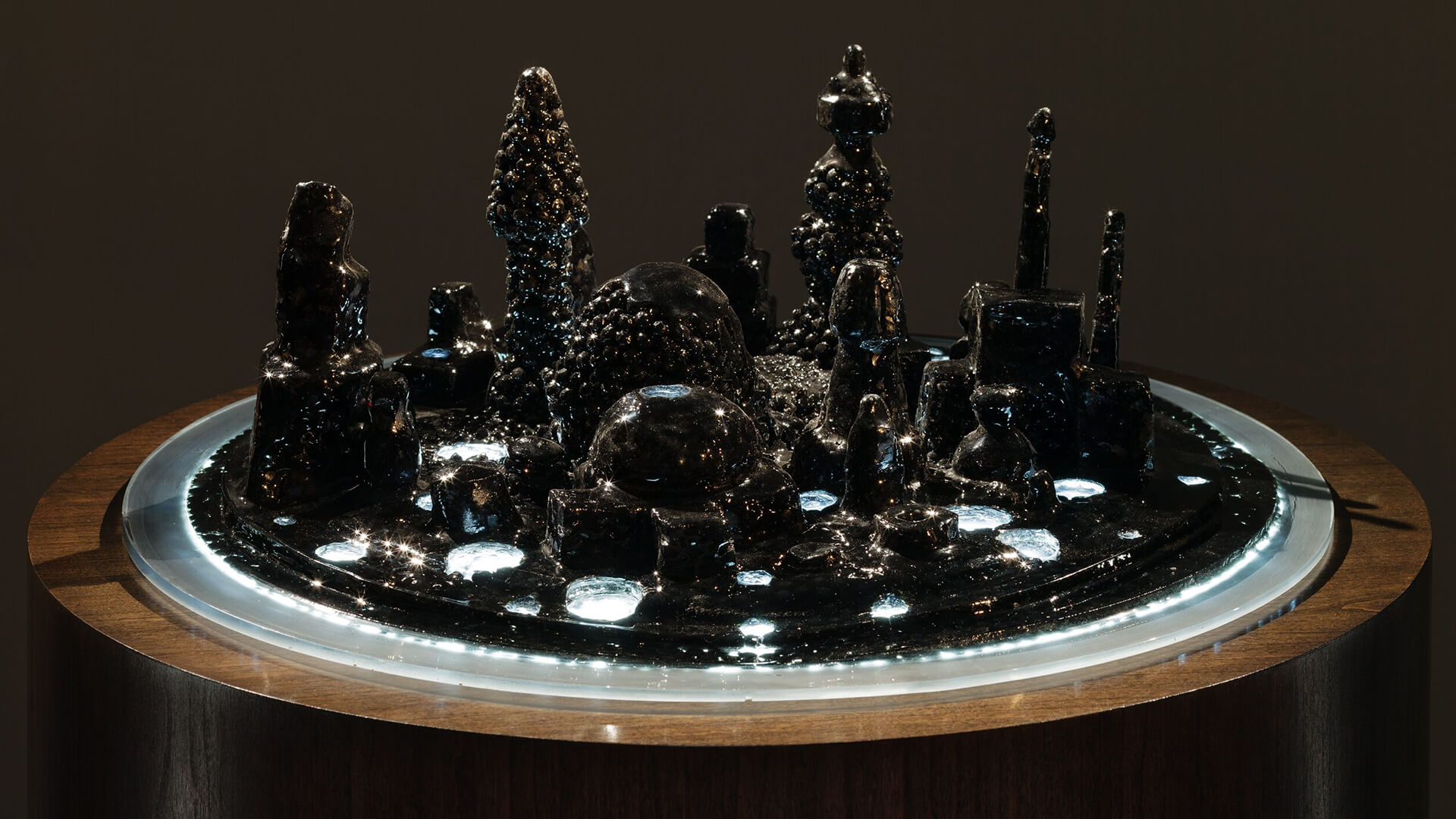
He later discovers that Kandor still exists, though in miniature form: stolen by an intergalactic archvillain Braniac prior to Krypton’s demise, the city was shrunk to a toy-sized metropolis and preserved inside of a glass bottle. Superman ultimately wrestles Kandor from Braniac and keeps the city in his Fortress of Solitude, sustaining its citizens with tanks of Kryptonic atmosphere. As Kelley once explained, Kandor functions for Superman as ‘a perpetual reminder of his inability to escape the past, and his alienated relationship to his present world.’
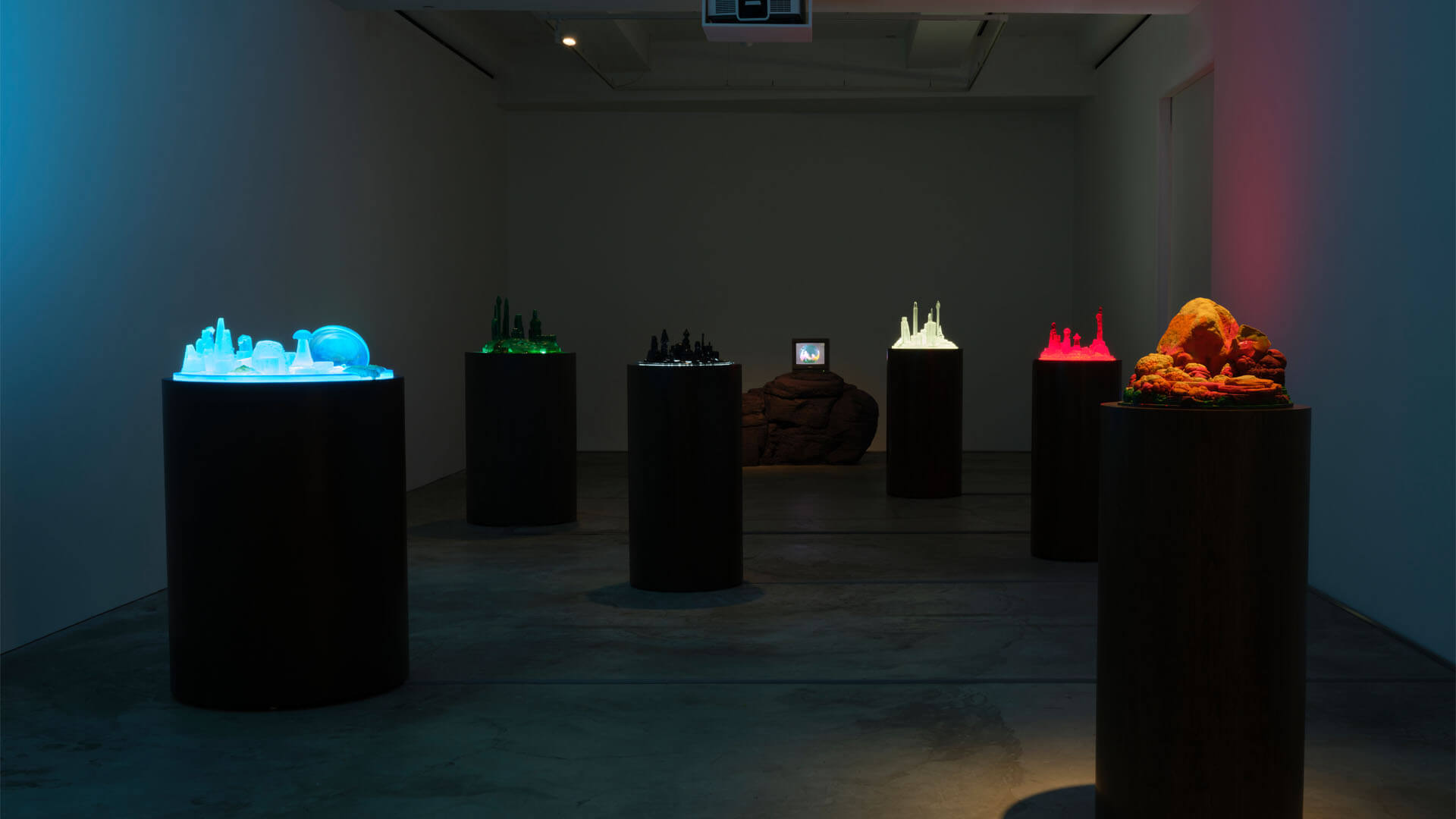
In researching the project, Kelley discovered that Kandor lacks a standardized, consistent depiction across the comics—an oversight that fascinated the artist. ‘It was impossible to reconstruct Kandor,’ Kelley wrote about the project. ‘Various partial and contradictory city views would have to be randomly patched together to create a composite version.’ The conflicting illustrations challenged the artist and further probed his interest in the porous nature of spatial memory. ‘The problem I set for myself was to translate the two-dimensional comic-book renderings into three-dimensional sculptures,’ Kelley explained. ‘I wanted them to be sculpturally complex, taking into consideration how they would be viewed in the round yet maintaining the sense of the original comics’ flatness.’

Kandor served as Kelley‘s inspiration for a twelve-year long project that explores themes of cultural memory, the perils of utopianism and the comforting pain of nostalgia. These visually opulent, technically ambitious sculptures—along with videos and large-scale installations—rework the imagery and mythology of the popularly revered American comic book and also reflect the loneliness inherent to modernity’s technological progress.
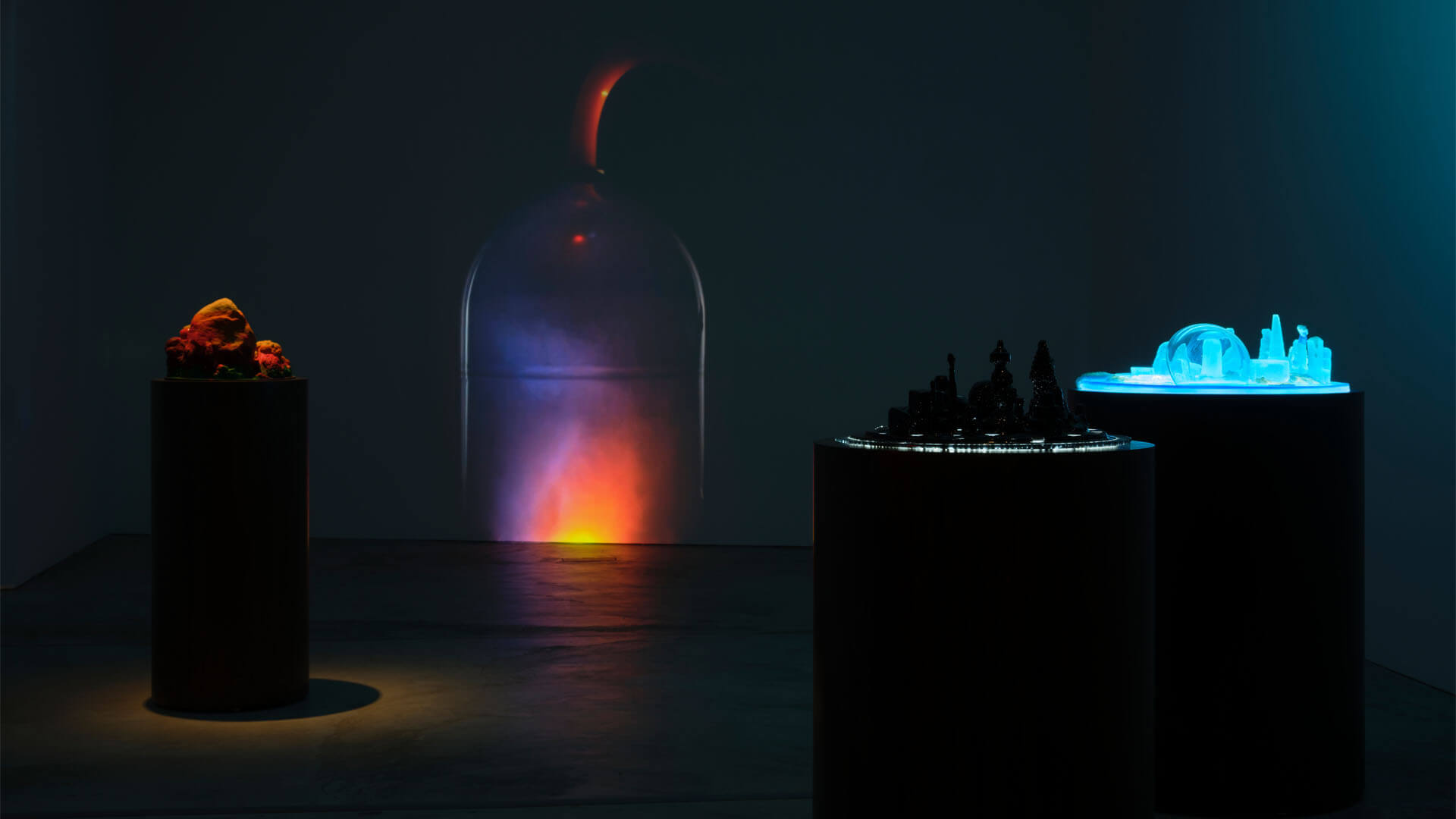
Visitors enter the exhibition from the upper floor of the gallery and encounter a large-scale video projection alongside a group of vitreous sculptures glowing in a dimly lit room. The video projection depicts ‘Bottle 4’ with an array of swirling, atmospheric light effects inside it, accompanied by an otherworldly soundtrack composed by Kelley.
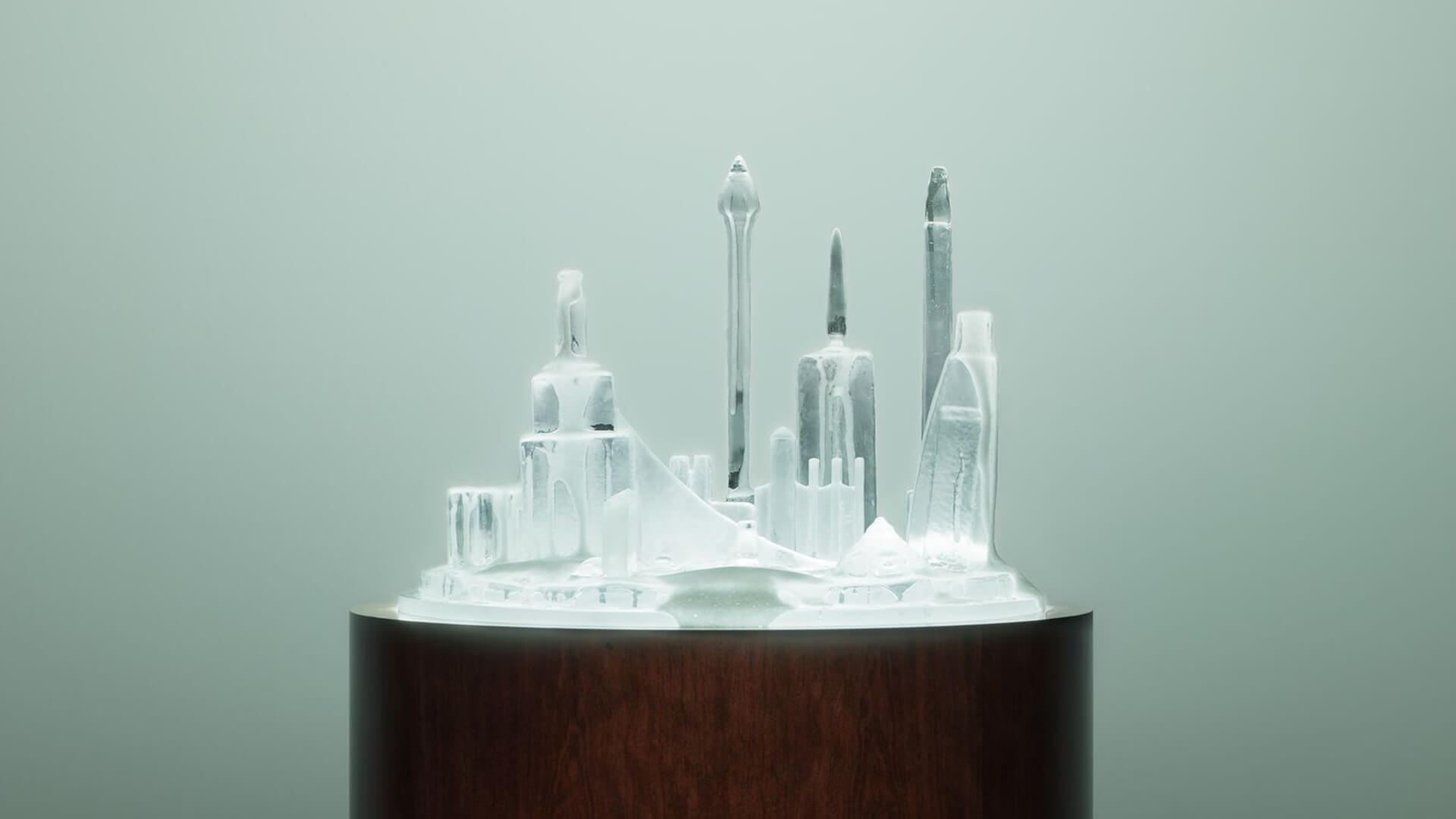
Visitors continue through the space to find a number of miniature metropolises representing the city of Kandor, creating an optically dazzling spectacle of refracted colors. Cities stand on plinths, illuminated from beneath, while their towering architectural skylines are bathed in tones of green, blue, red, black and white.

The exhibition continues on the gallery’s lower level with additional time-lapse videos, Lenticulars, animations and sculpture. In ‘Topo Gigio Topographical Model,’ instead of a city, Kelley placed a series of cartoon figures underneath a glass dome, mounted on a pedestal of black bedrock. Like the bottled Kandor, the three toys in ‘Topo Gigio Topographical Model’ become an ageless memento of a past that can never be revisited, isolated beneath a bell jar that Kelley found and abandoned on an otherworldly mountain of volcanic mass.
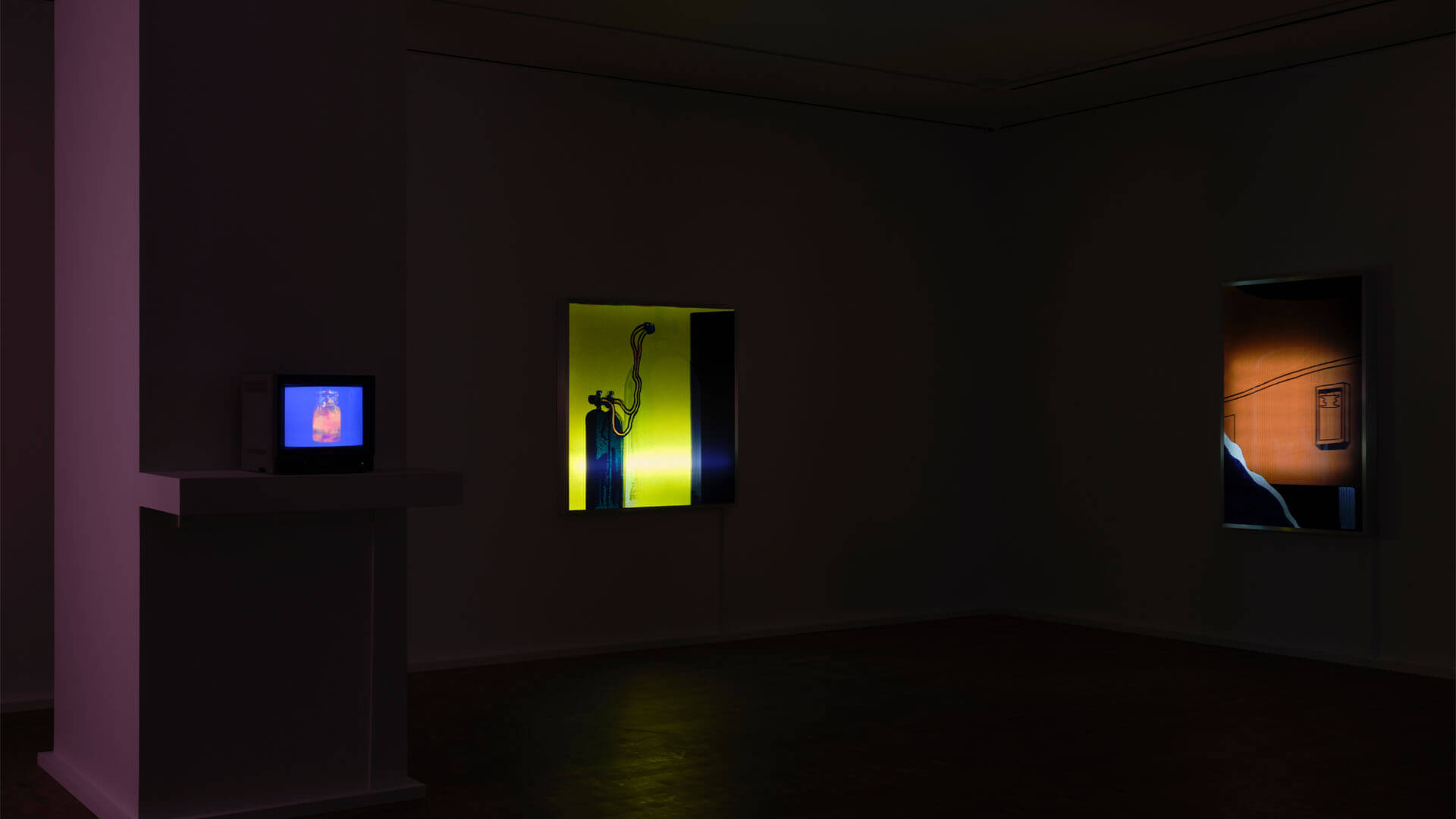
The work evokes Kelley’s preoccupation with psychology, nostalgia and repressed childhood memories that runs through the artist’s practice as a whole. The lenticular lightboxes feature images of Kandor as it appears in the Superman comics, blown up to a larger size. The lenticulars manipulate the two-dimensional drawings and the illustrations’ colors in order to give the image an illusionistic sense of movement and dimension. ‘My goal,’ wrote Kelley, ‘was to highlight the differences between the graphic qualities of the comic-book illustrations and the dimensionalized versions of them represented in the sculptures.’
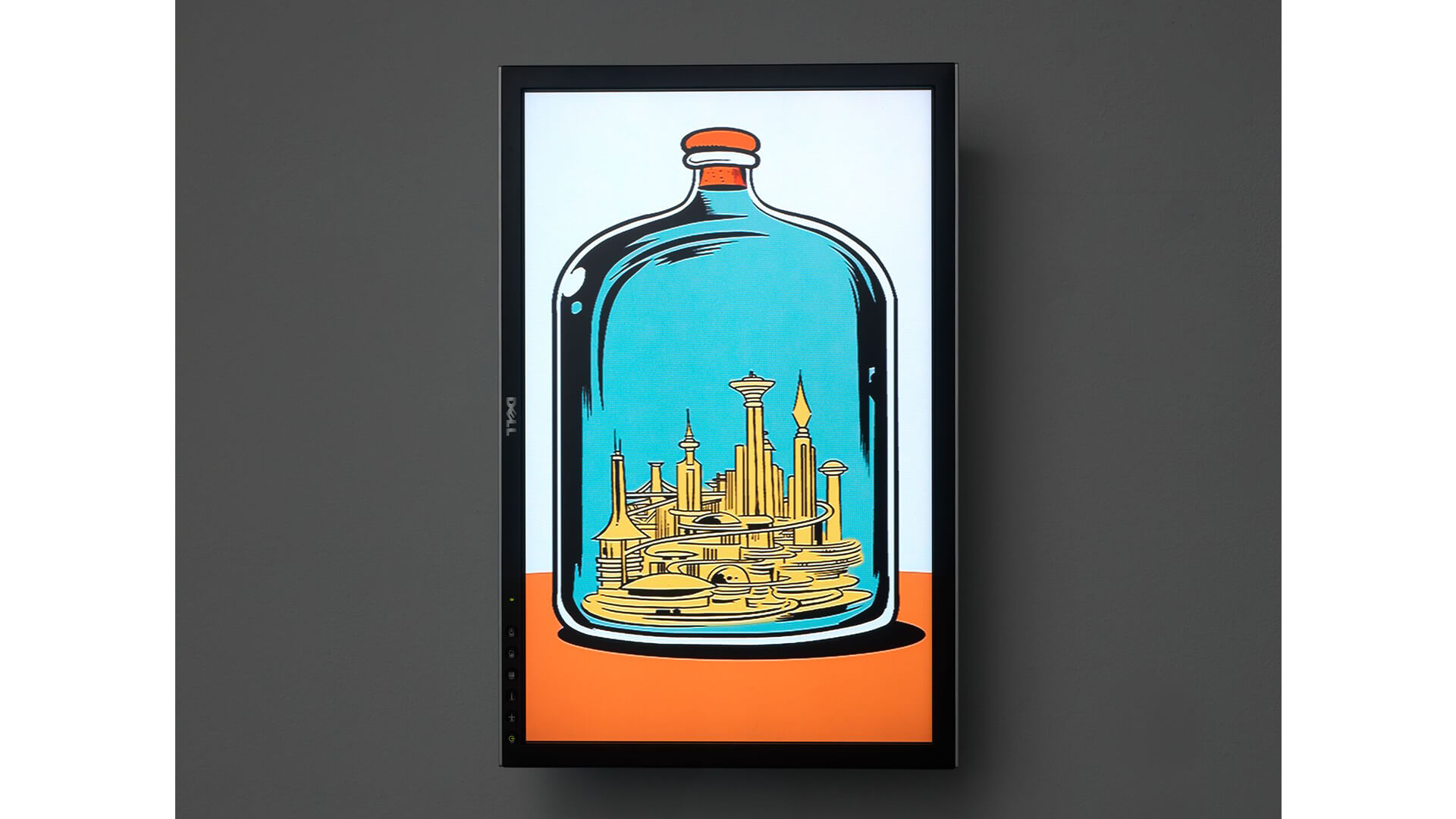
In ‘Animation 2’ and ‘Animation 20,’ Kelley animated the images of the bottles in the style of popular cartoons. ‘Each bottle performs a single emotional sound or body movement: screaming, breathing, cooing, giggling,’ wrote Kelley. The animated videos are displayed on flatscreen monitors that hang on the wall like paintings. Mingling the banal and the absurd, the innocent and the perverse, the comic and the tragic, Kelley’s art launches an assault on the purity of aesthetic convention, spearheaded by the artist’s dark humor.
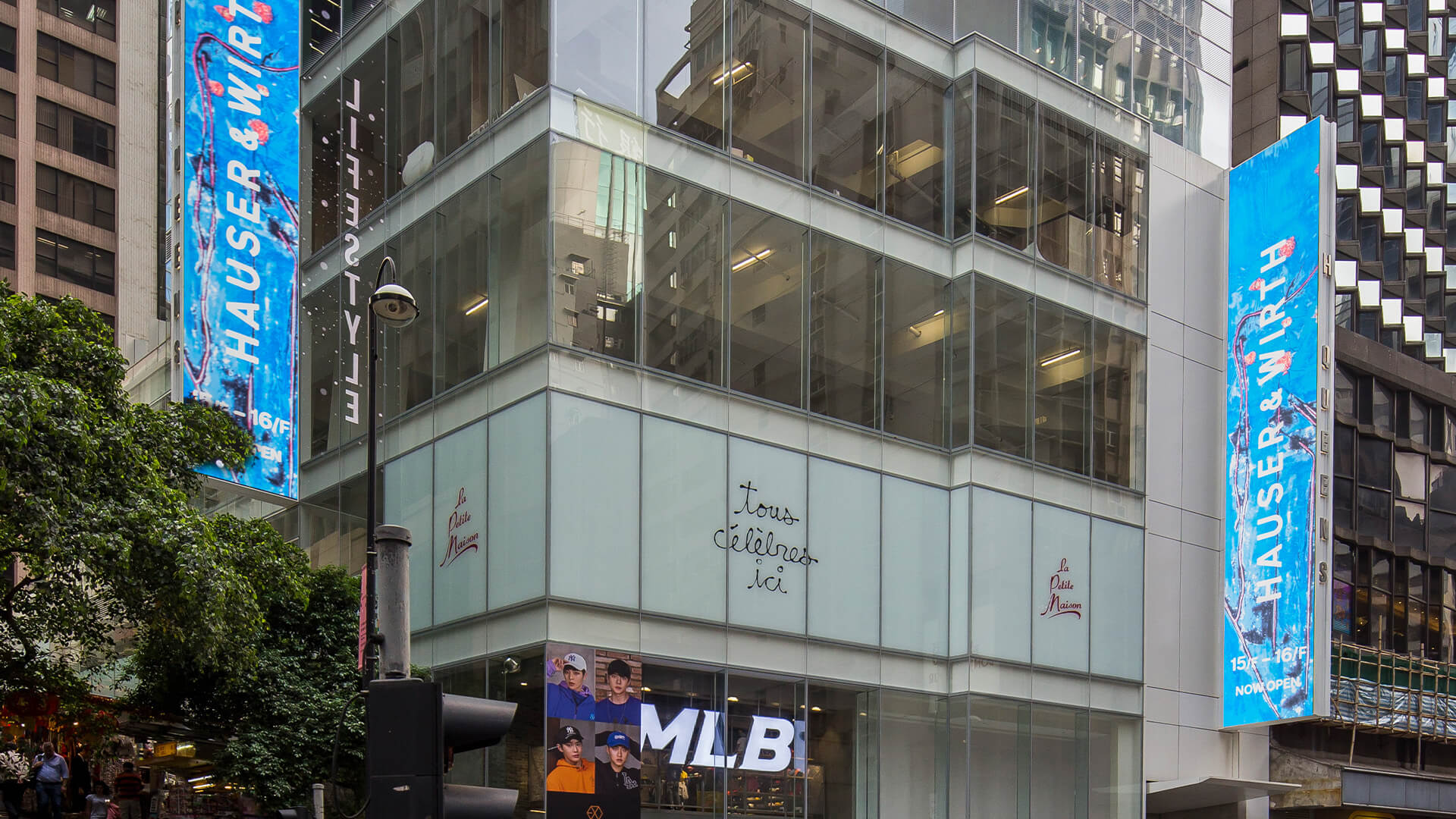
On view in Hong Kong
The gallery is open Tue – Sat, 11 am – 7 pm.
Please visit our location page to plan your visit.
All images © Mike Kelley Foundation for the Arts. All Rights Reserved / VAGA at ARS, NY. Courtesy the Foundation and Hauser & Wirth.
Animation 20, photo: Brian Forrest. Animation 2, photo: Achim Kukulies. The Lugubrious Pastel Joys of the Candy-Froth Dolphin Portal, photo: Lepkowski Studios. Topo Gigio Topographical Model, photo: Fredrik Nilsen. City 20, photo: Fredrik Nilsen. City 6, photo: Fredrik Nilsen. City 5, photo: Achim Kukulies. City 7, photo: Fredrik Nilsen. City 13, AP 2/2, photo: Fredrik Nilsen. City 13, Ed. 2/10, photo: Fredrik Nilsen. City 3, photo: Fredrik Nilsen. Lenticular 16, photo: Fredrik Nilsen. Lenticular 8, photo: Fredrik Nilsen. Lenticular 11, photo: Fredrik Nilsen. Lenticular 1, photo: Guillaume Onimus. Lenticular 9, photo: Fredrik Nilsen. Lenticular 18, photo: Fredrik Nilsen. Lenticular 3, photo: Genevieve Hanson. Portrait of Mike Kelley, photo: Cameron Wittig.
About the Artist
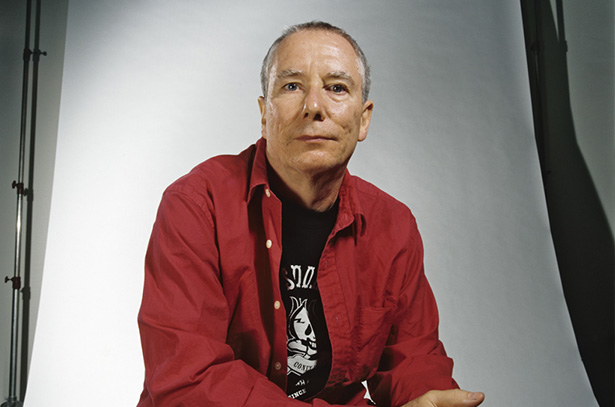
Mike Kelley
Mike Kelley is widely considered one of the most influential artists of our time. Originally from a suburb outside of Detroit, Kelley attended the University of Michigan, Ann Arbor, before moving to Southern California in 1976 to study at California Institute of the Arts from which he received an MFA in 1978. The city of Los Angeles became his adopted home and the site of his prolific art practice. In much of his work, Kelley drew from a wide spectrum of high and low culture, and was known to scour flea markets for America’s cast-offs and leftovers. Mining the banal objects of everyday life, Kelley elevated these materials to question and dismantle Western conceptions of contemporary art and culture.
Starting out in the late 1970s, Kelley became known for performance and installation based works; he came to prominence in the 1980s with a series of sculptures composed of common craft materials and stuffed animals. His work later widened in scope and physical scale, exemplified by ‘Educational Complex’ (1995), the ‘Kandors’ series (1999 – 2011), ‘Extracurricular Activity Projective Reconstruction’ series (2000 – 2011), and the posthumously completed public work ‘Mobile Homestead’ (2006 – 2013). These projects invoked a vast range of media and forms, illustrating the artist's versatility and underscored a number of Kelley's recurrent themes, such as repressed memory, sexuality, adolescence, class, and Americana, which were central to his artistic praxis. Throughout his career, Kelley also worked on curatorial projects, collaborated with many artists and musicians, and produced a formidable body of critical and creative writing.
Inquire about available works by Mike Kelley
On view now through 25 February 2023 at Hauser & Wirth Hong Kong.
Current Exhibitions
1 / 12
